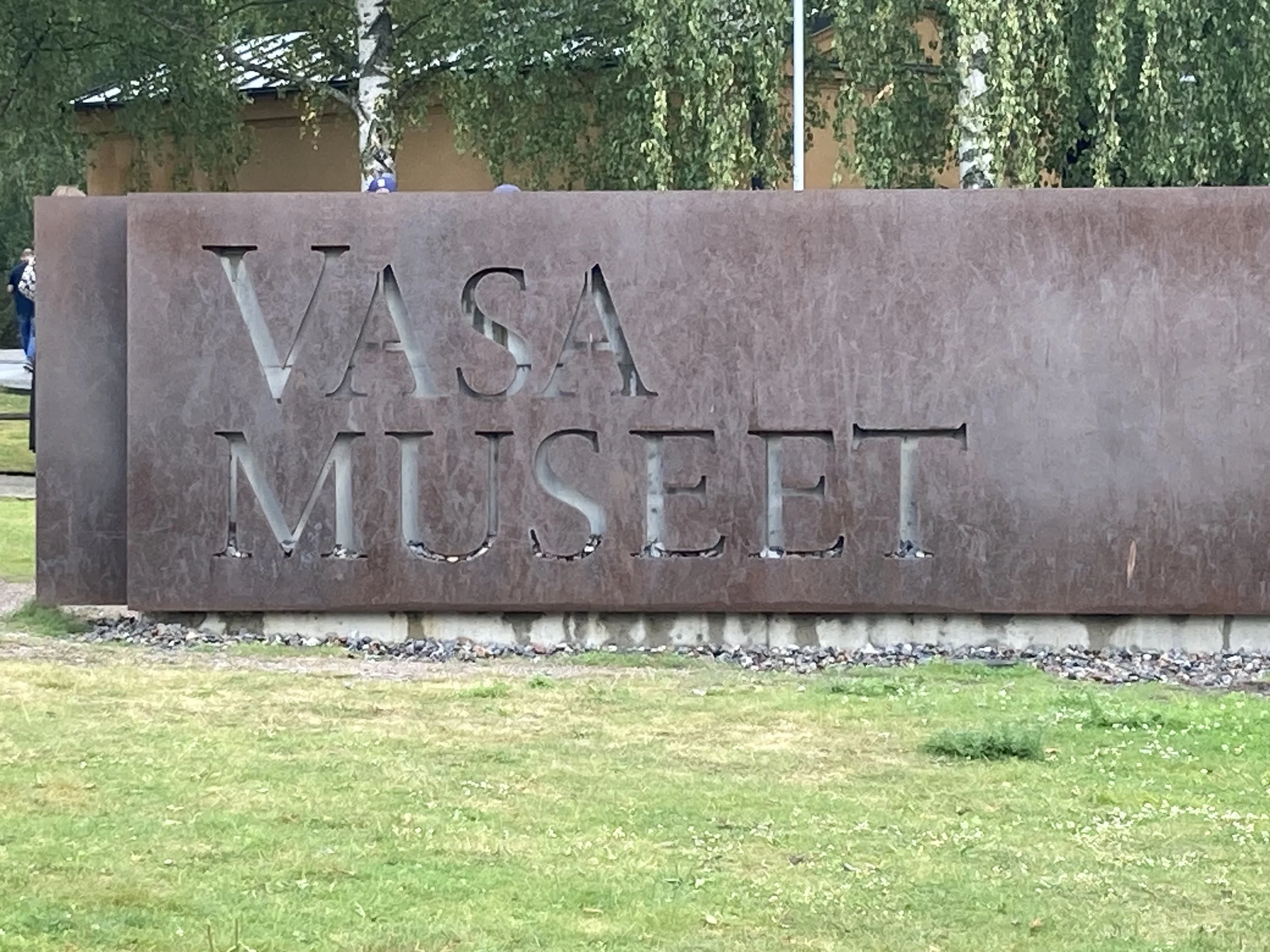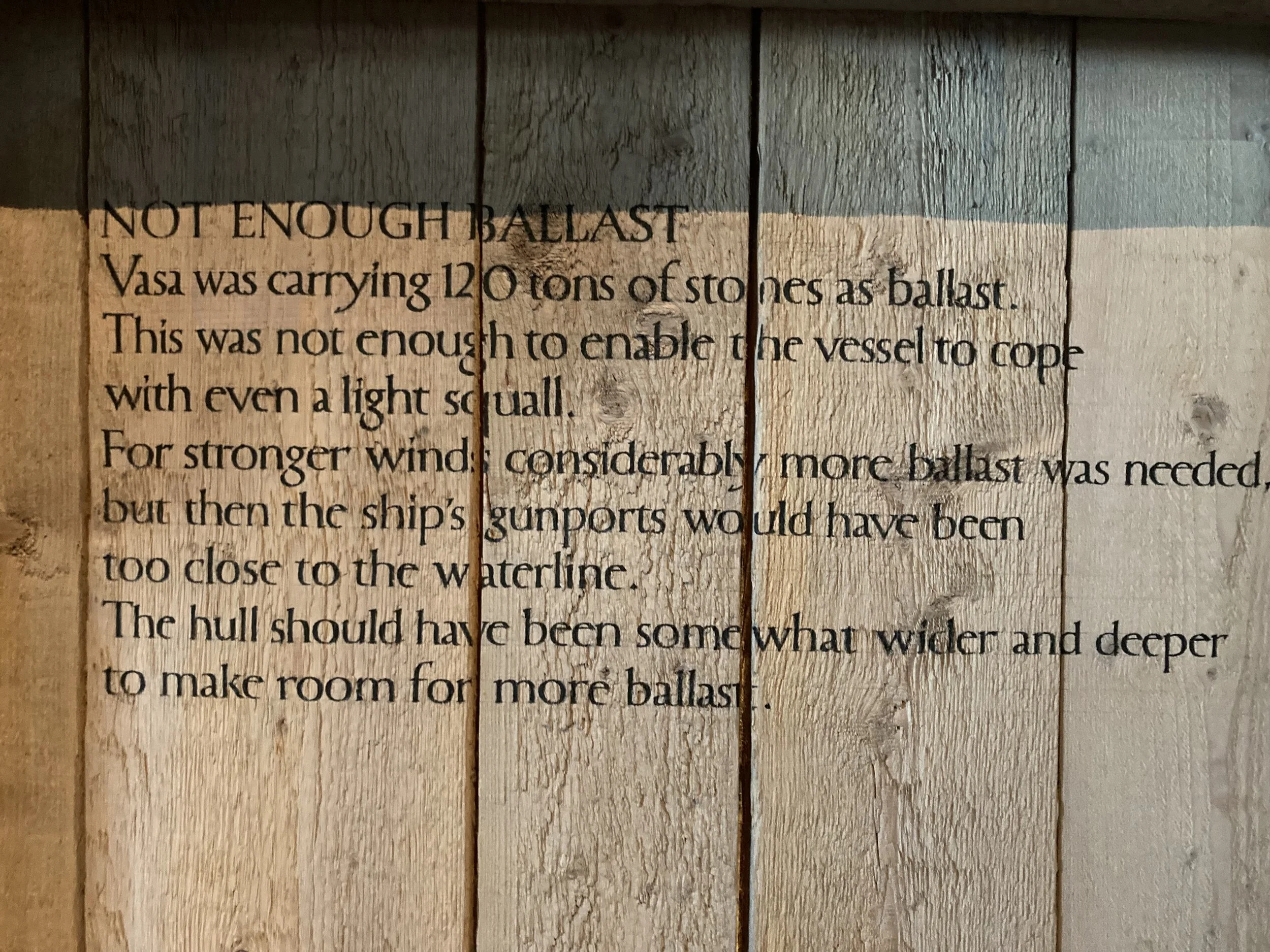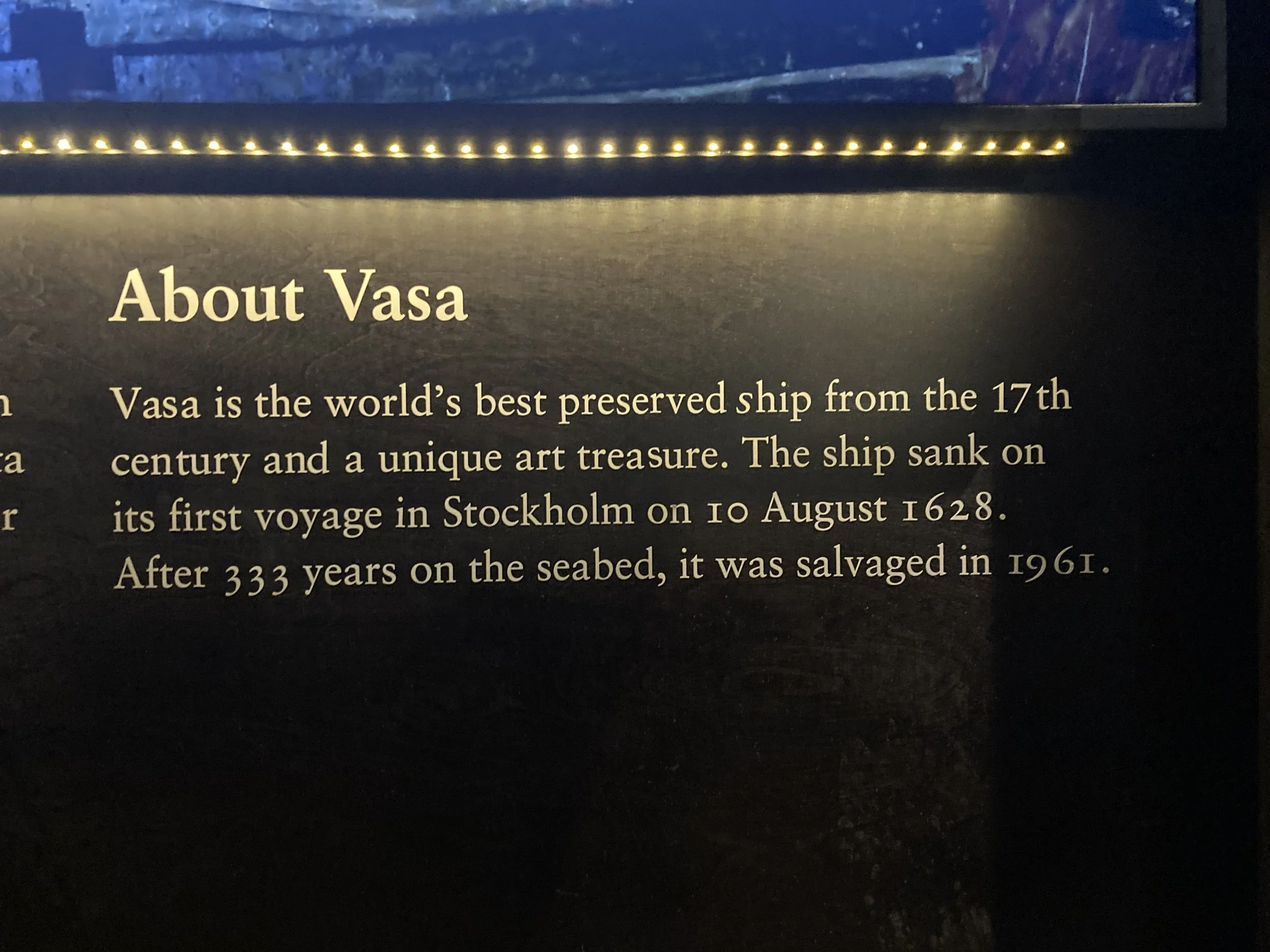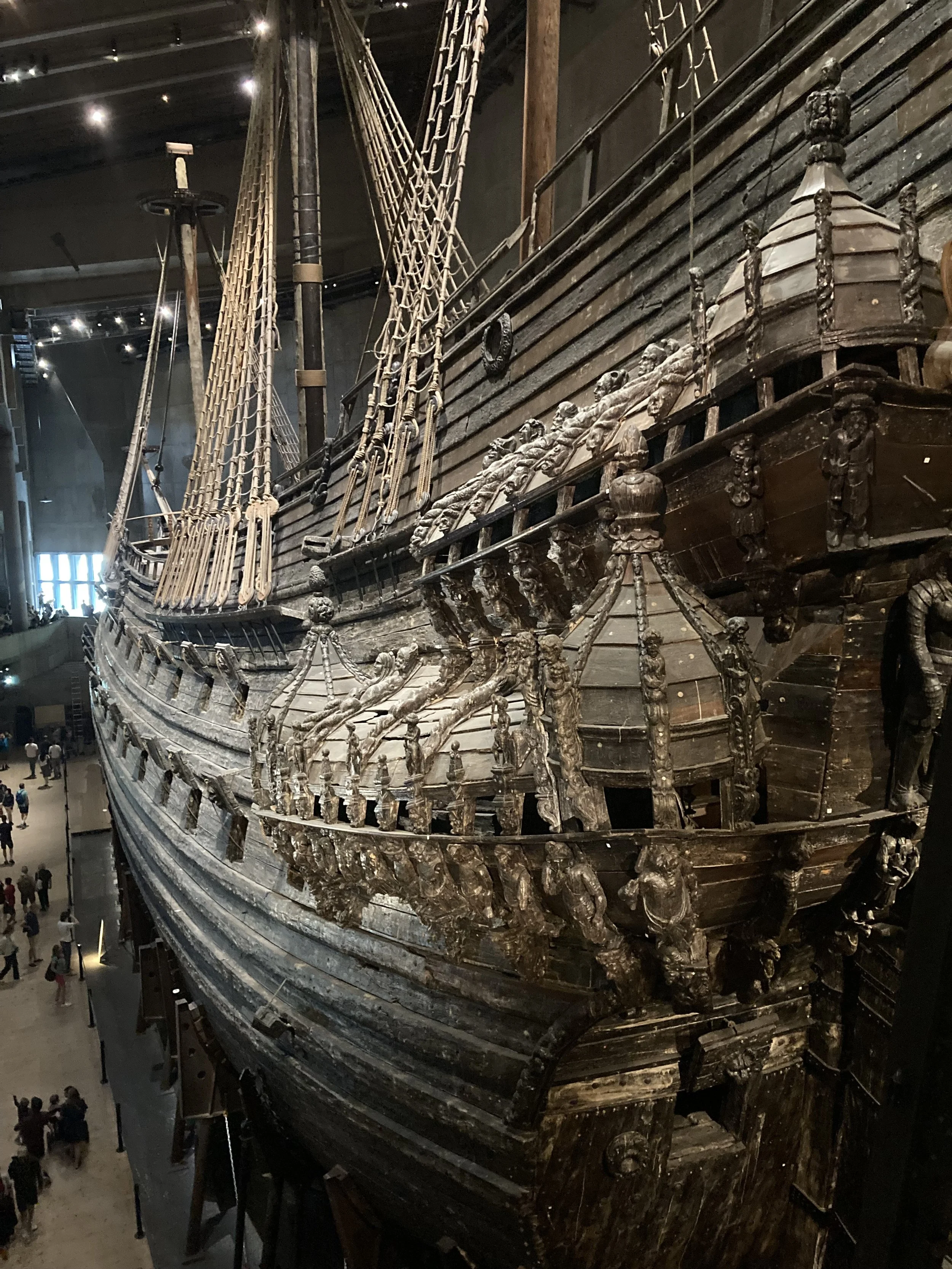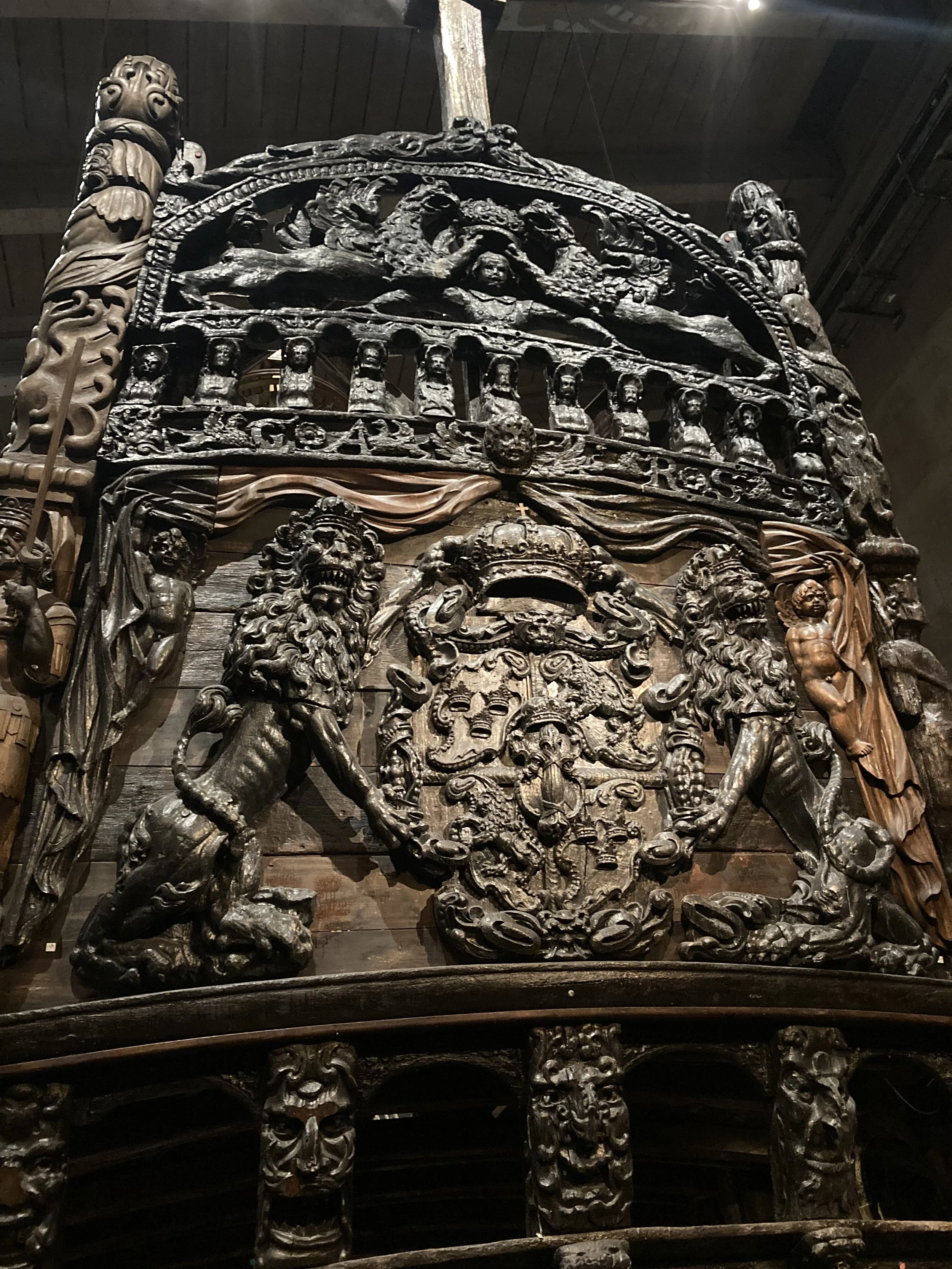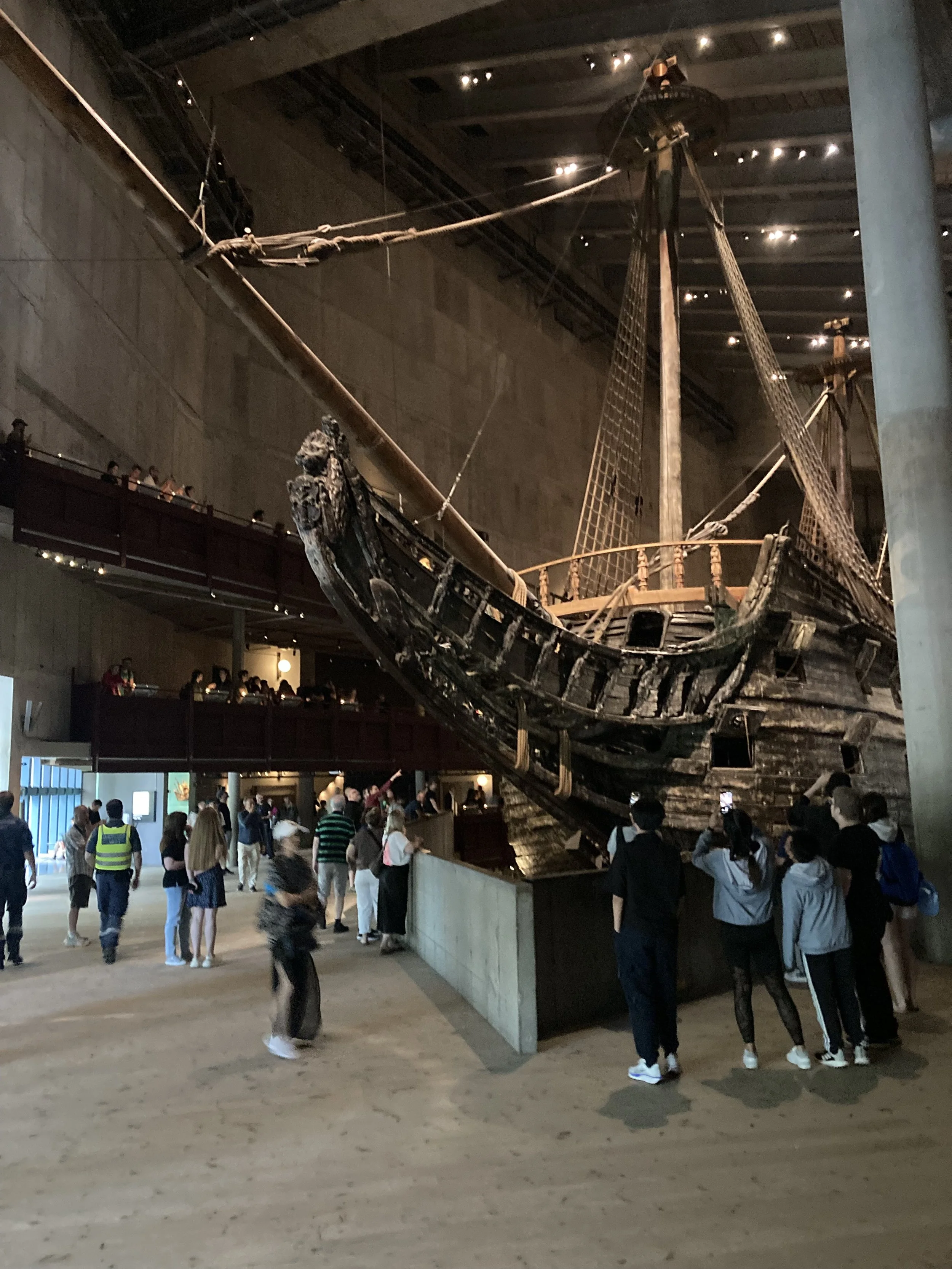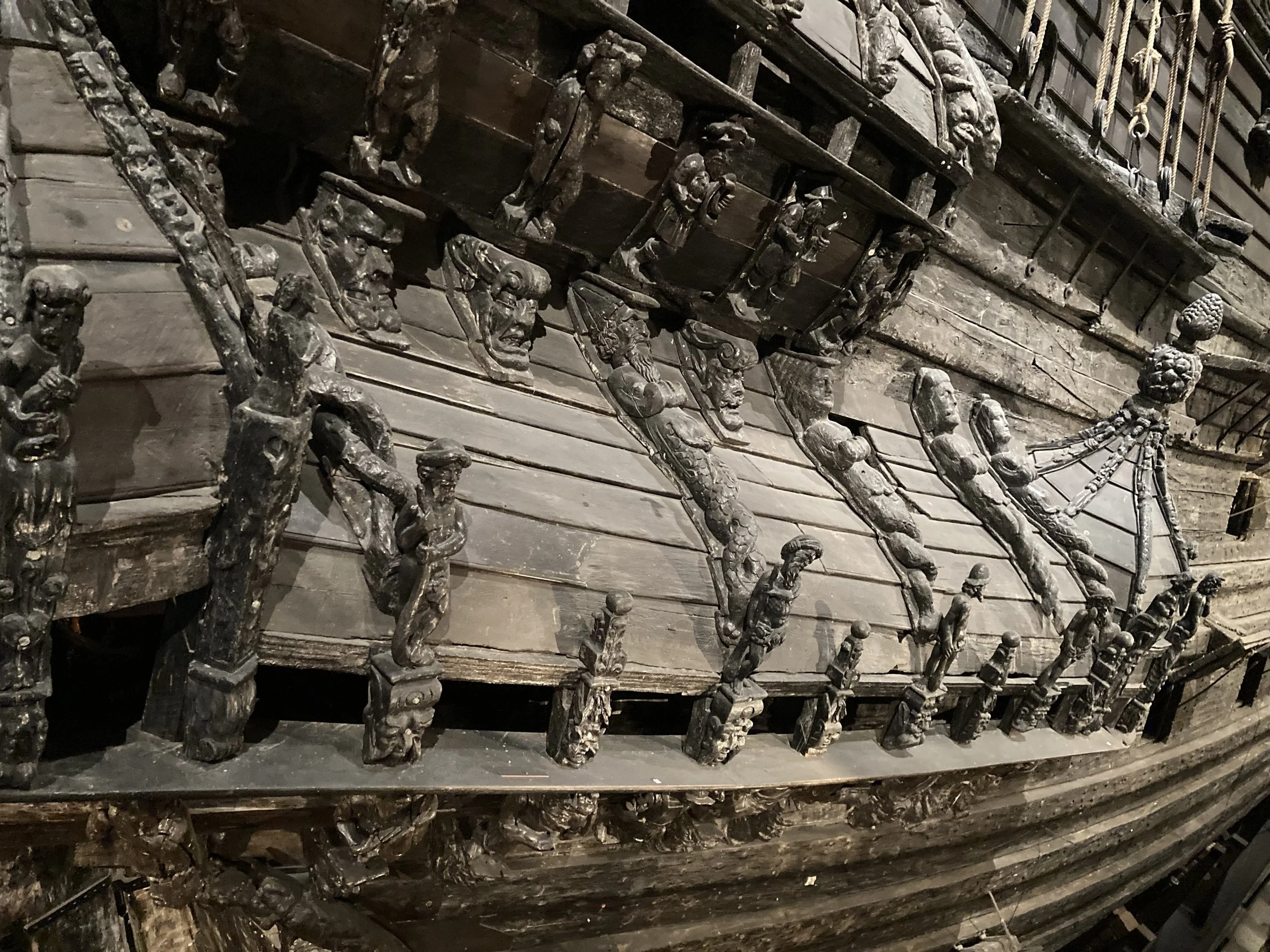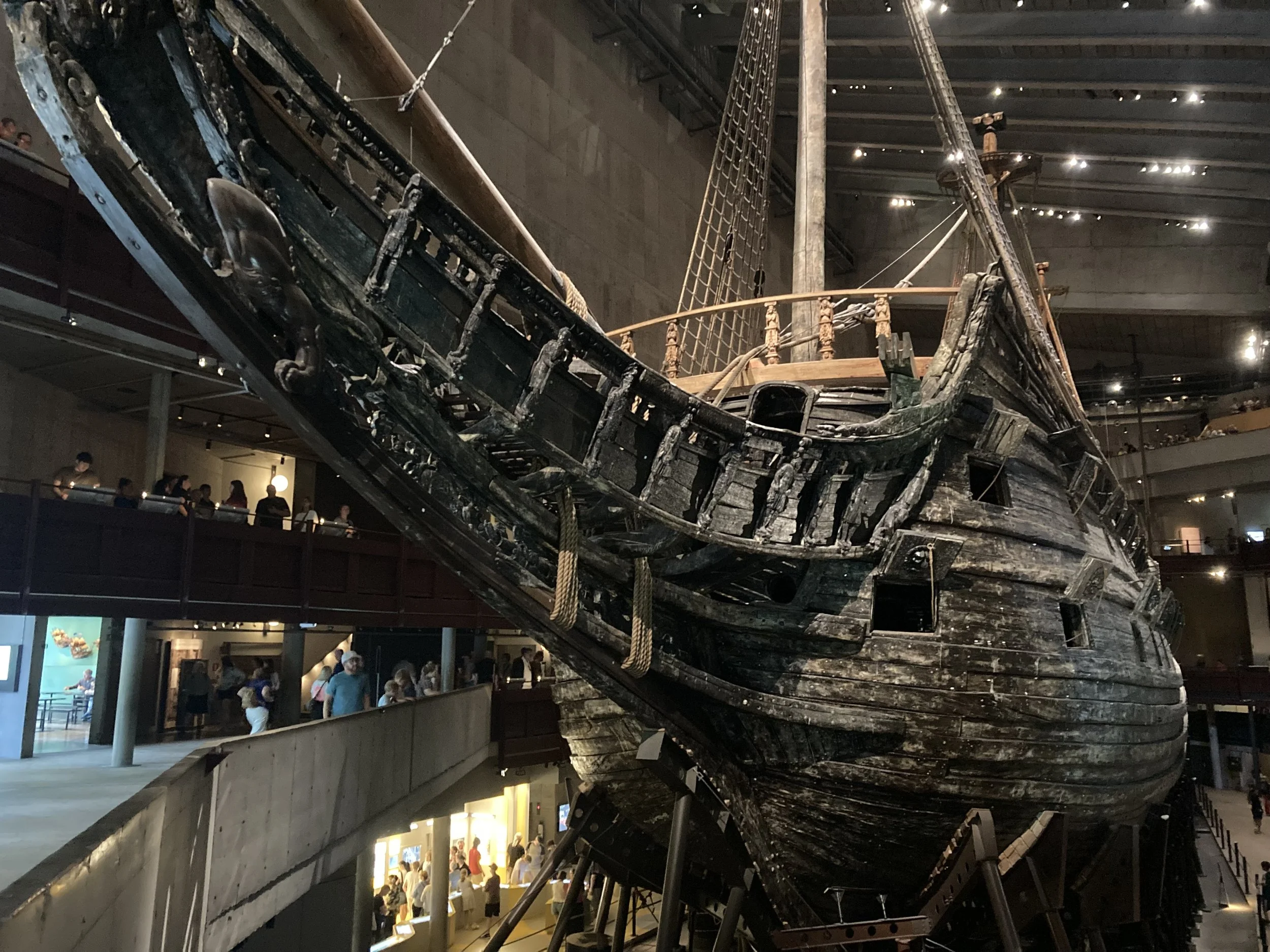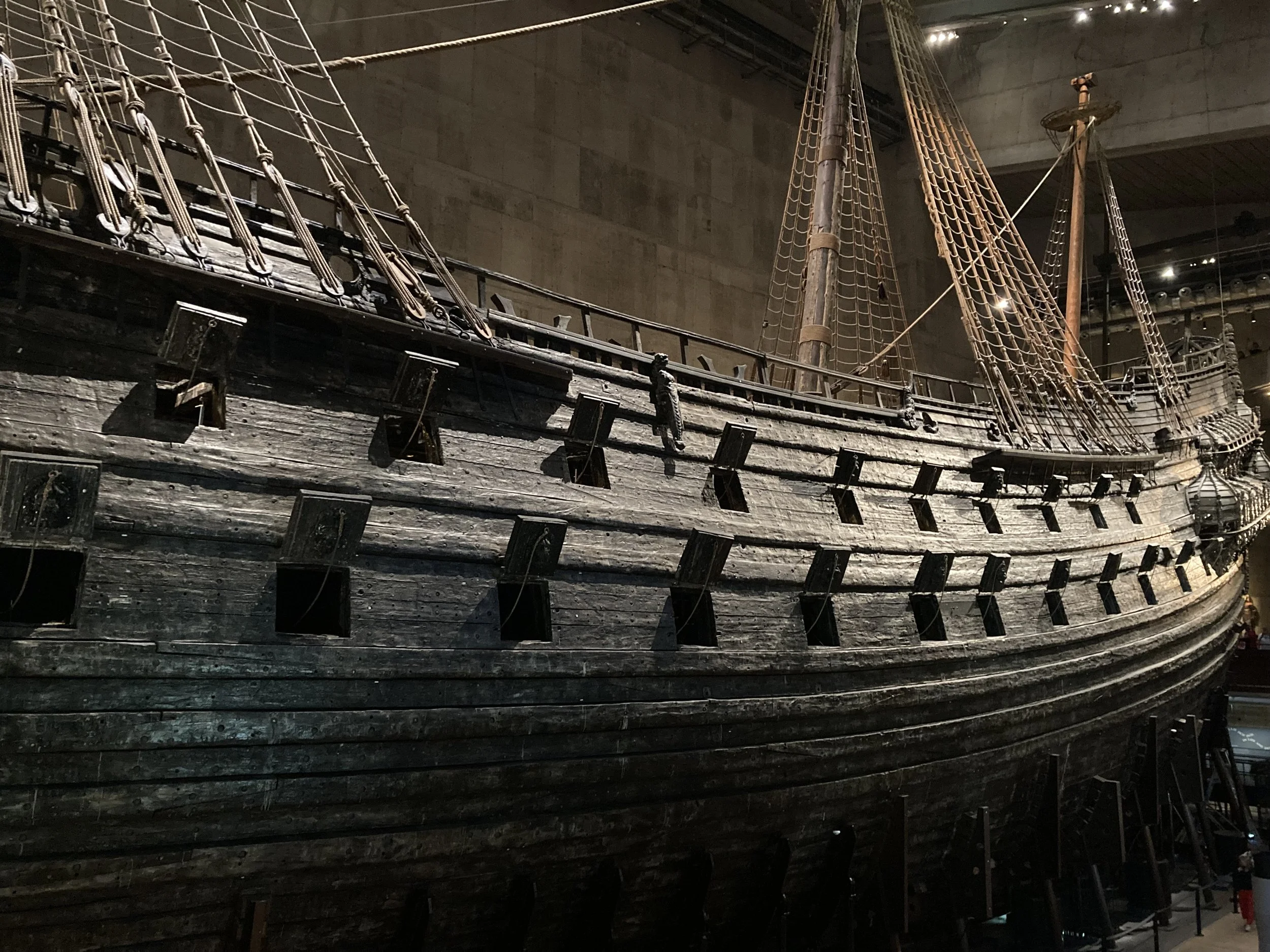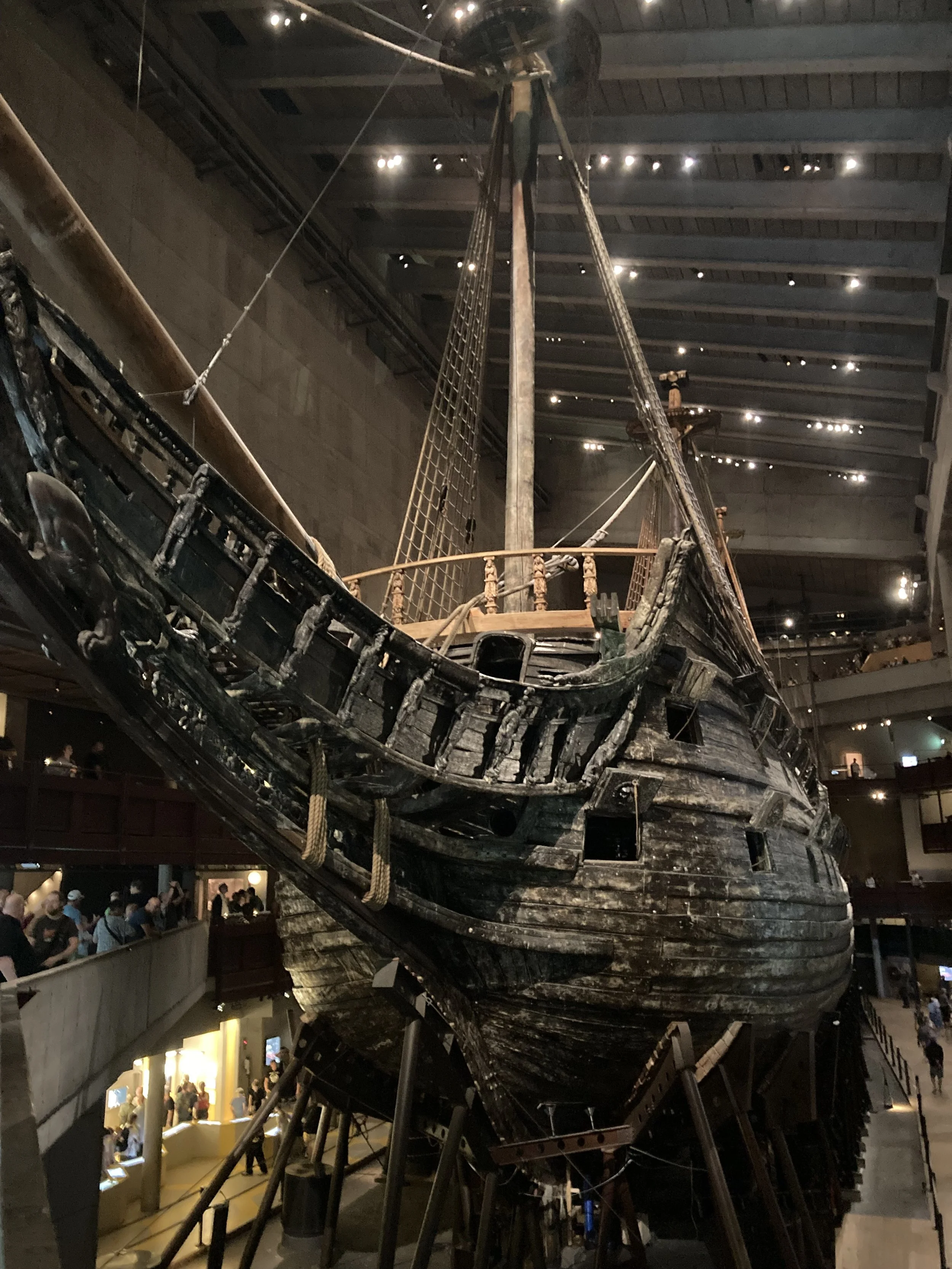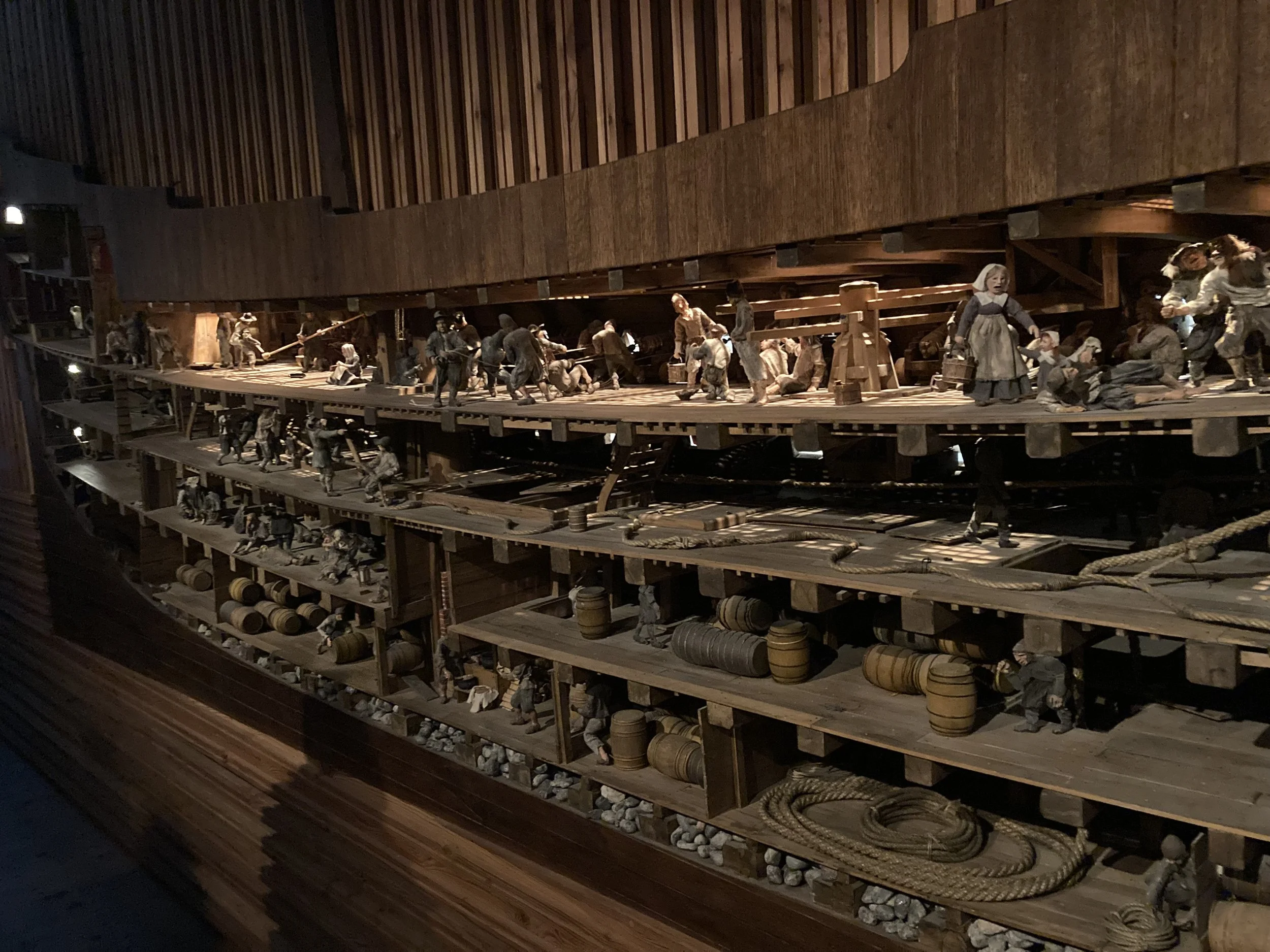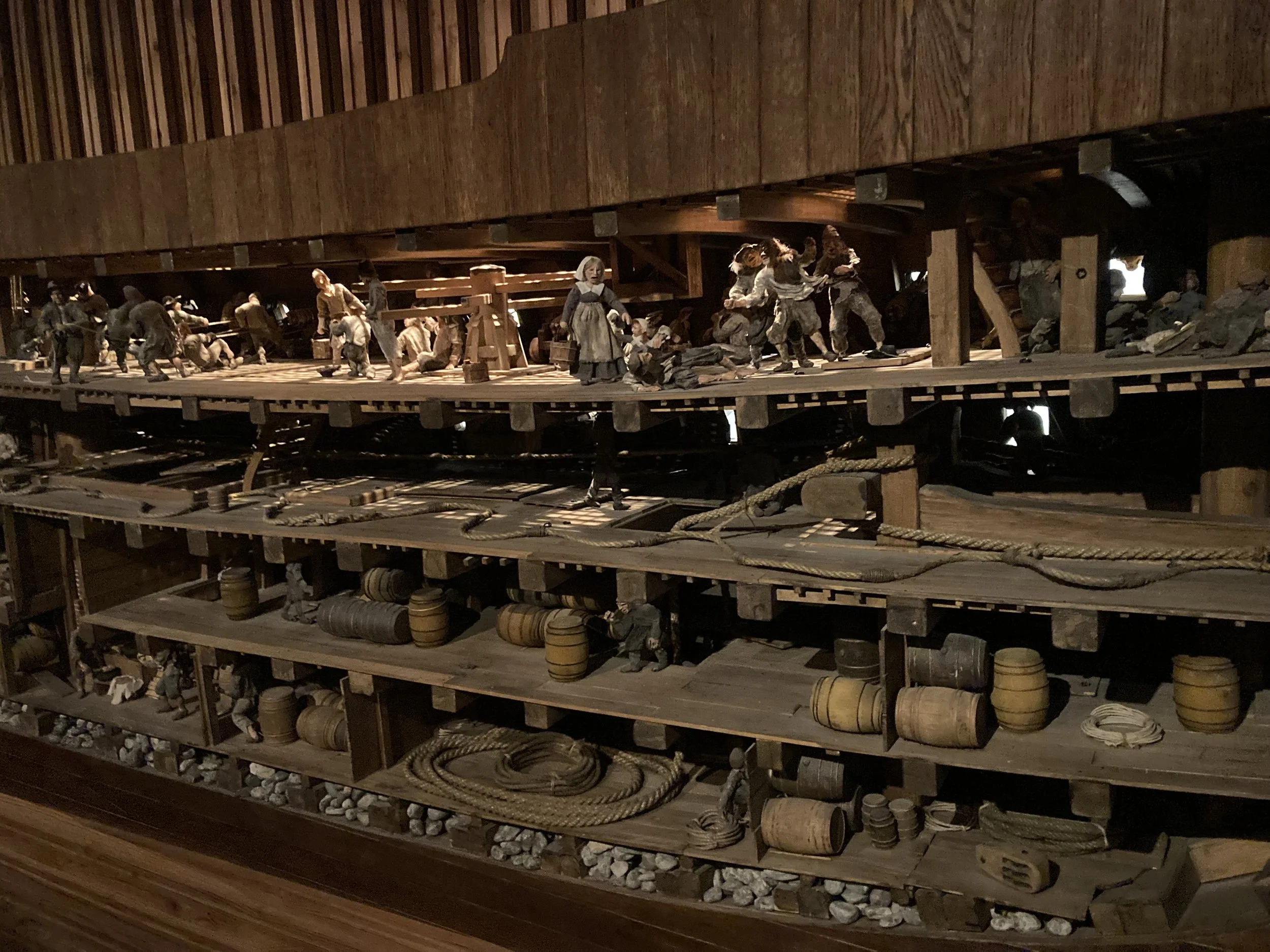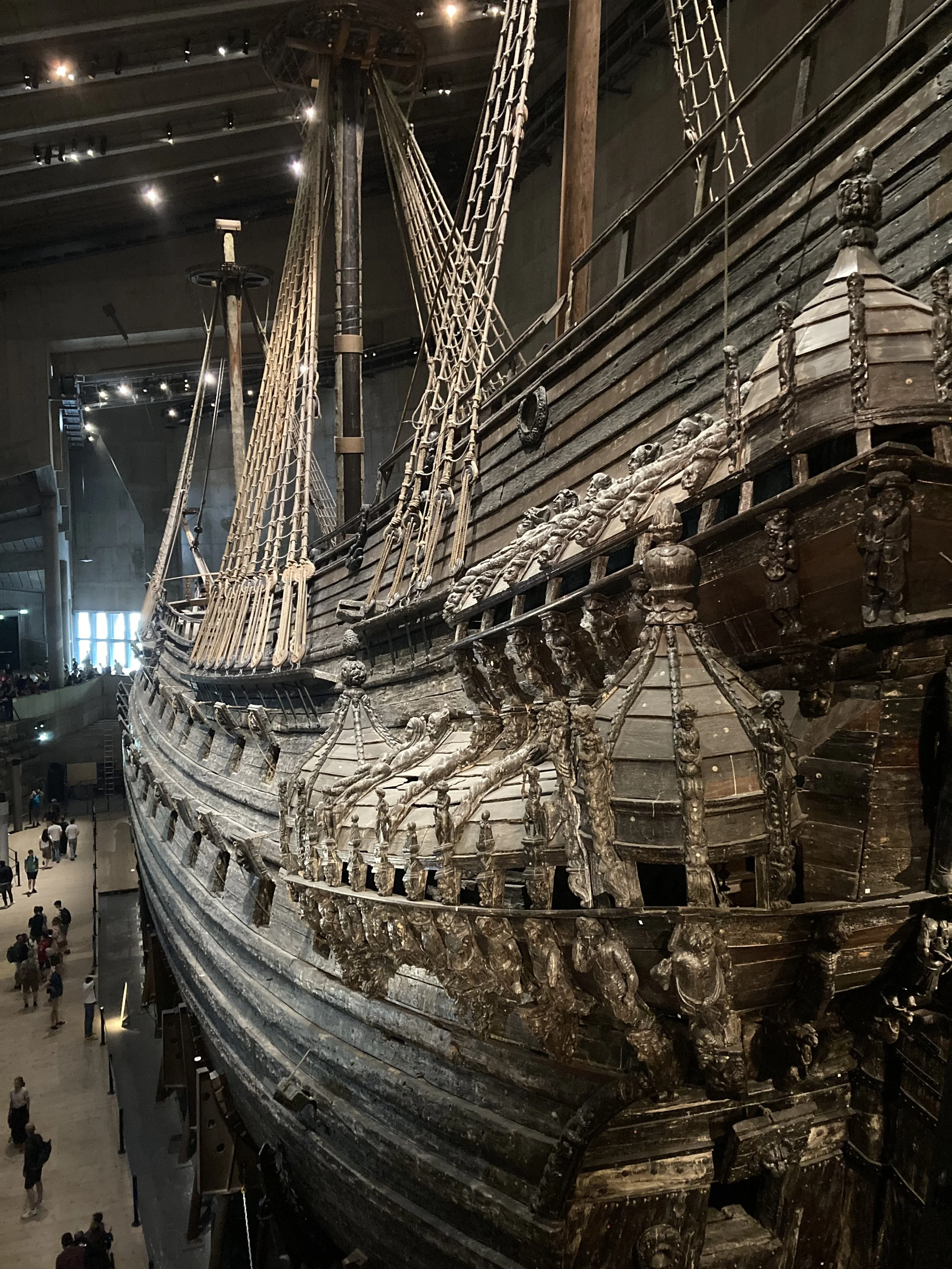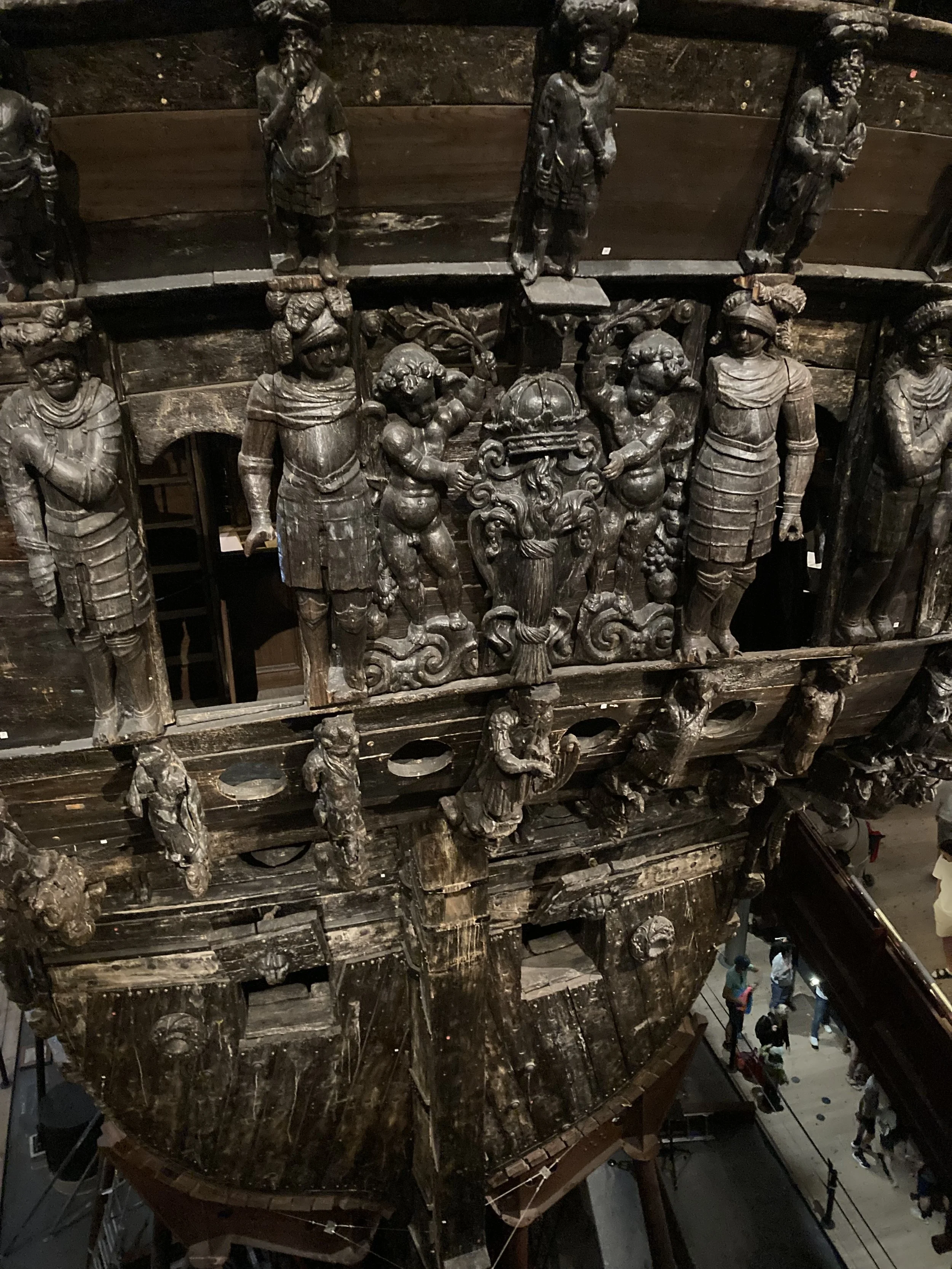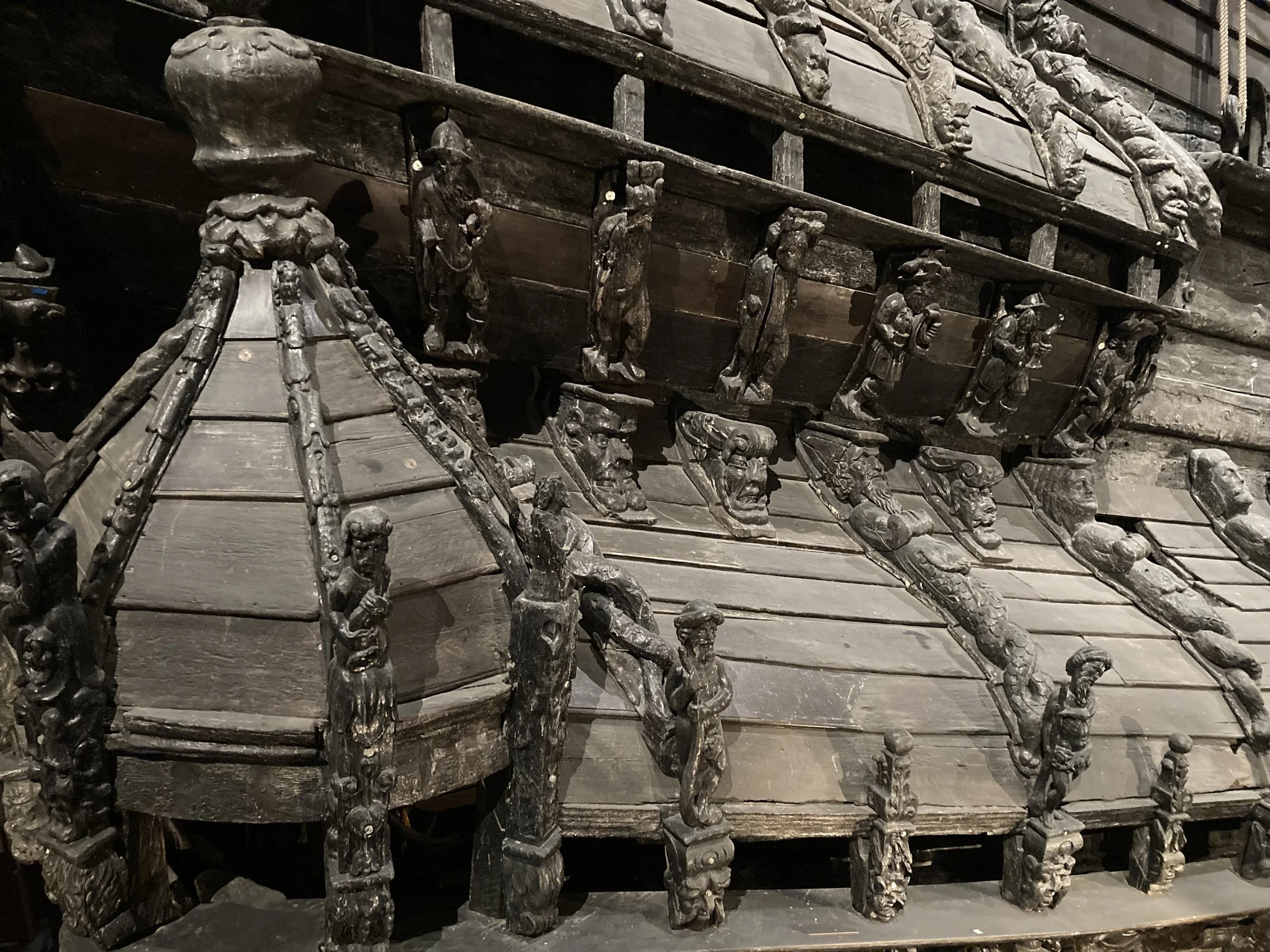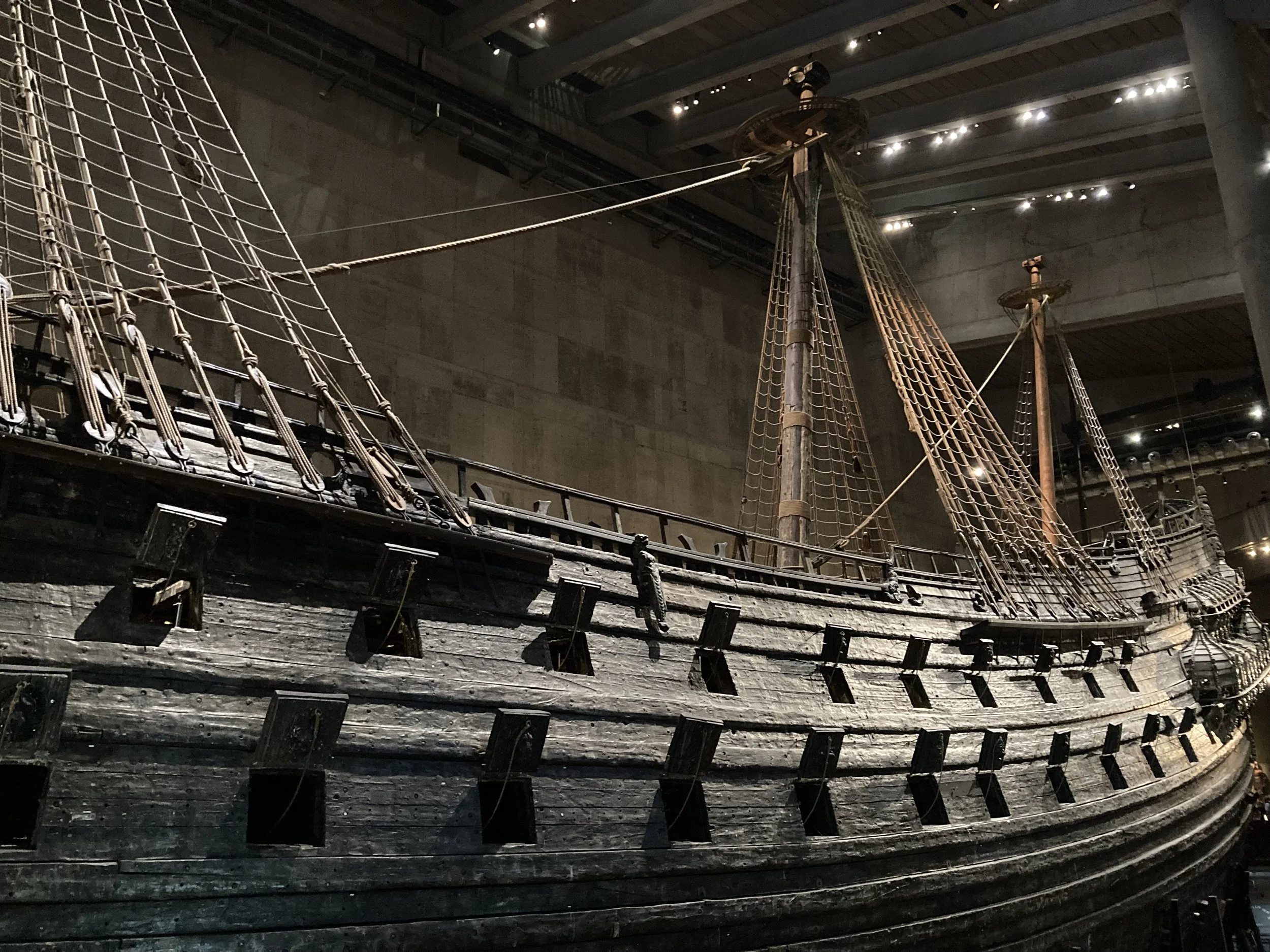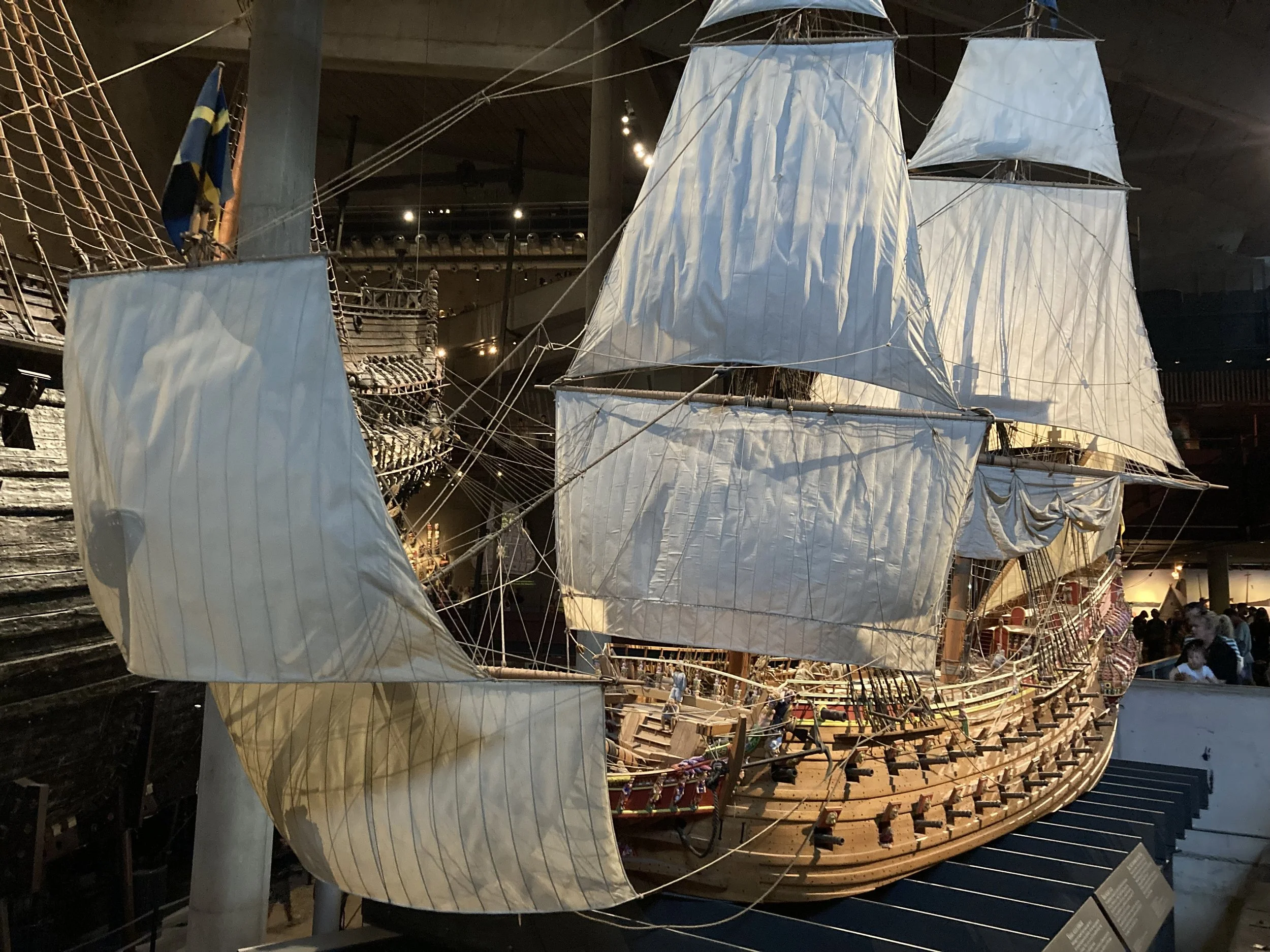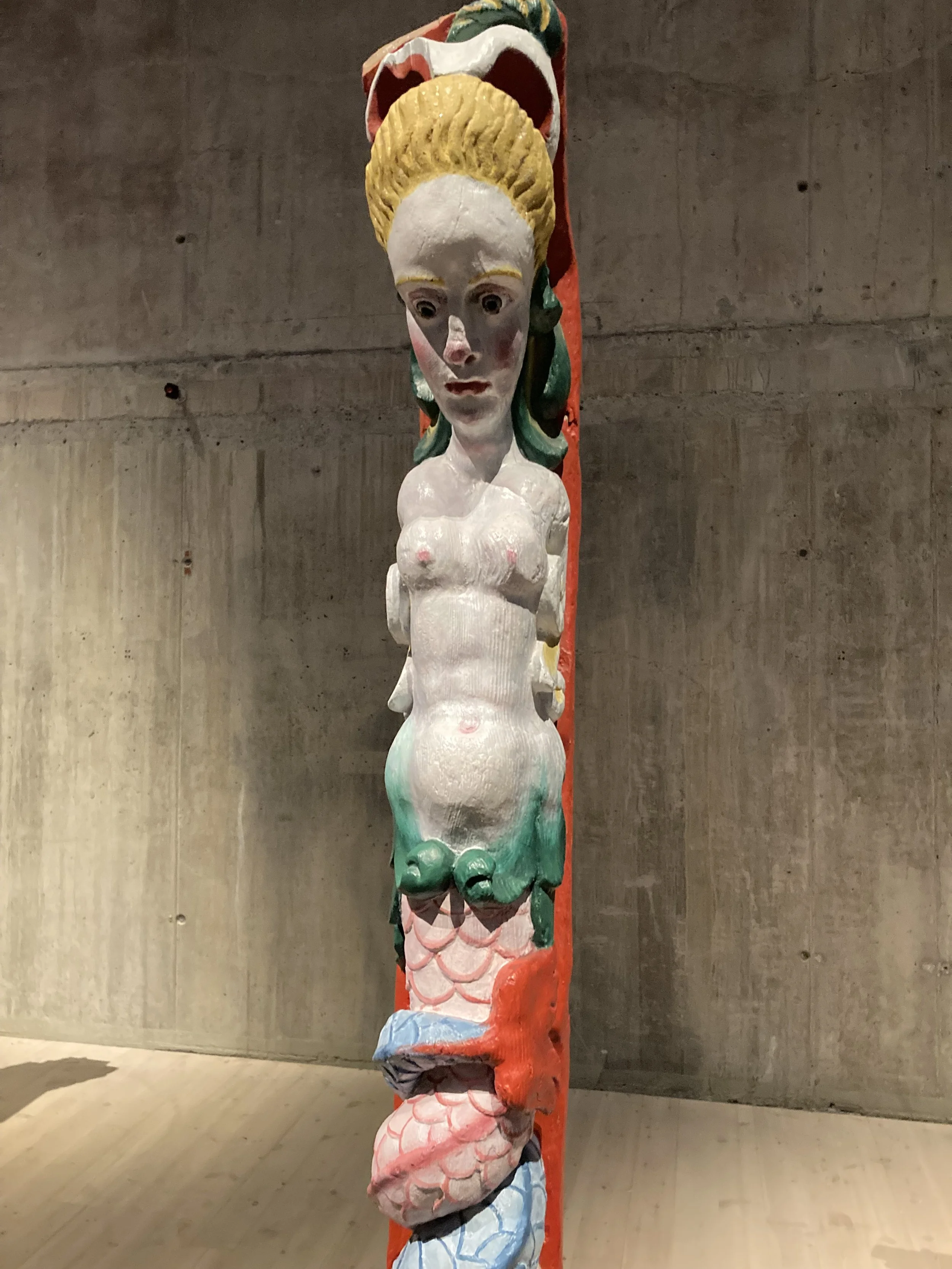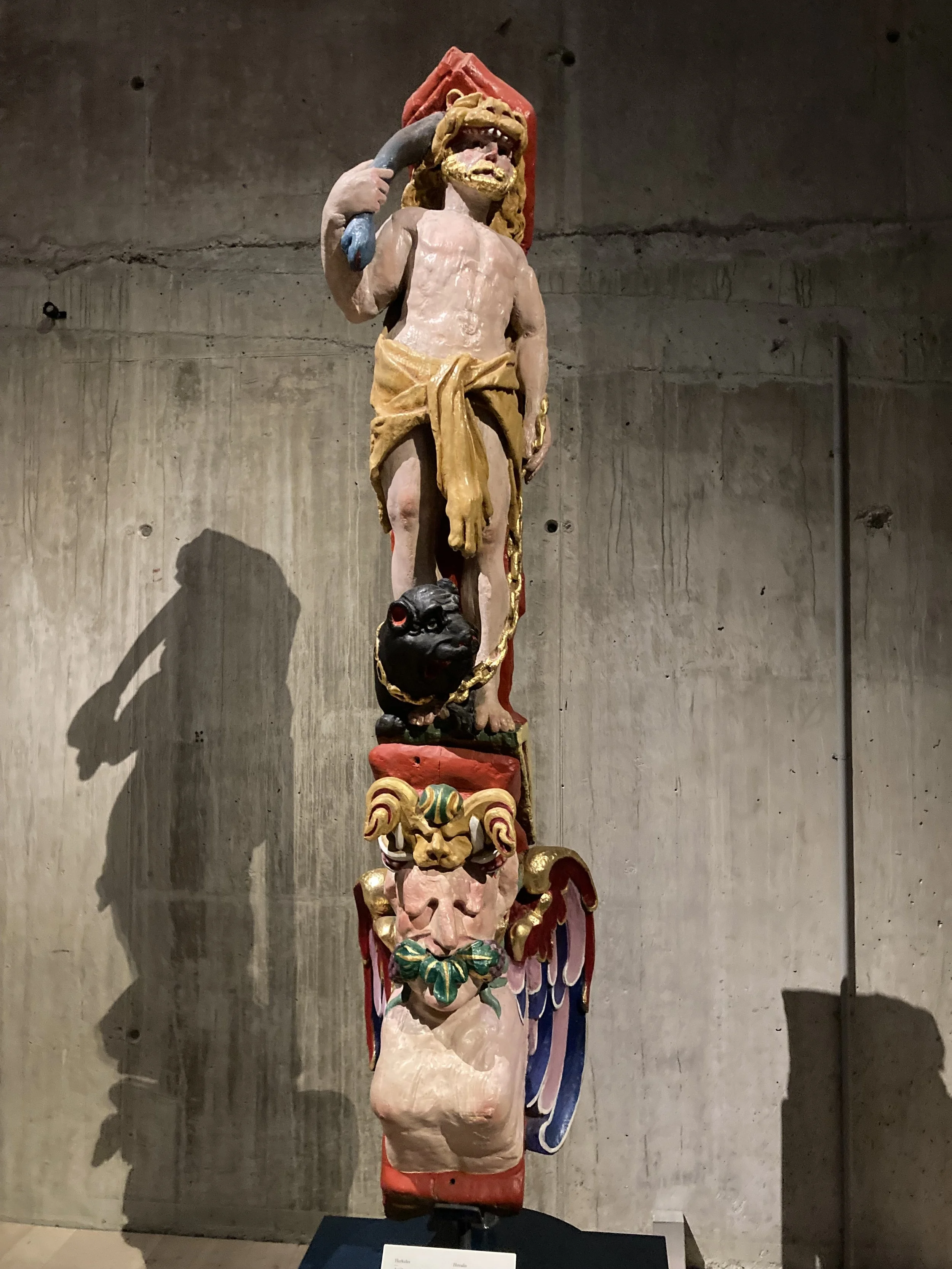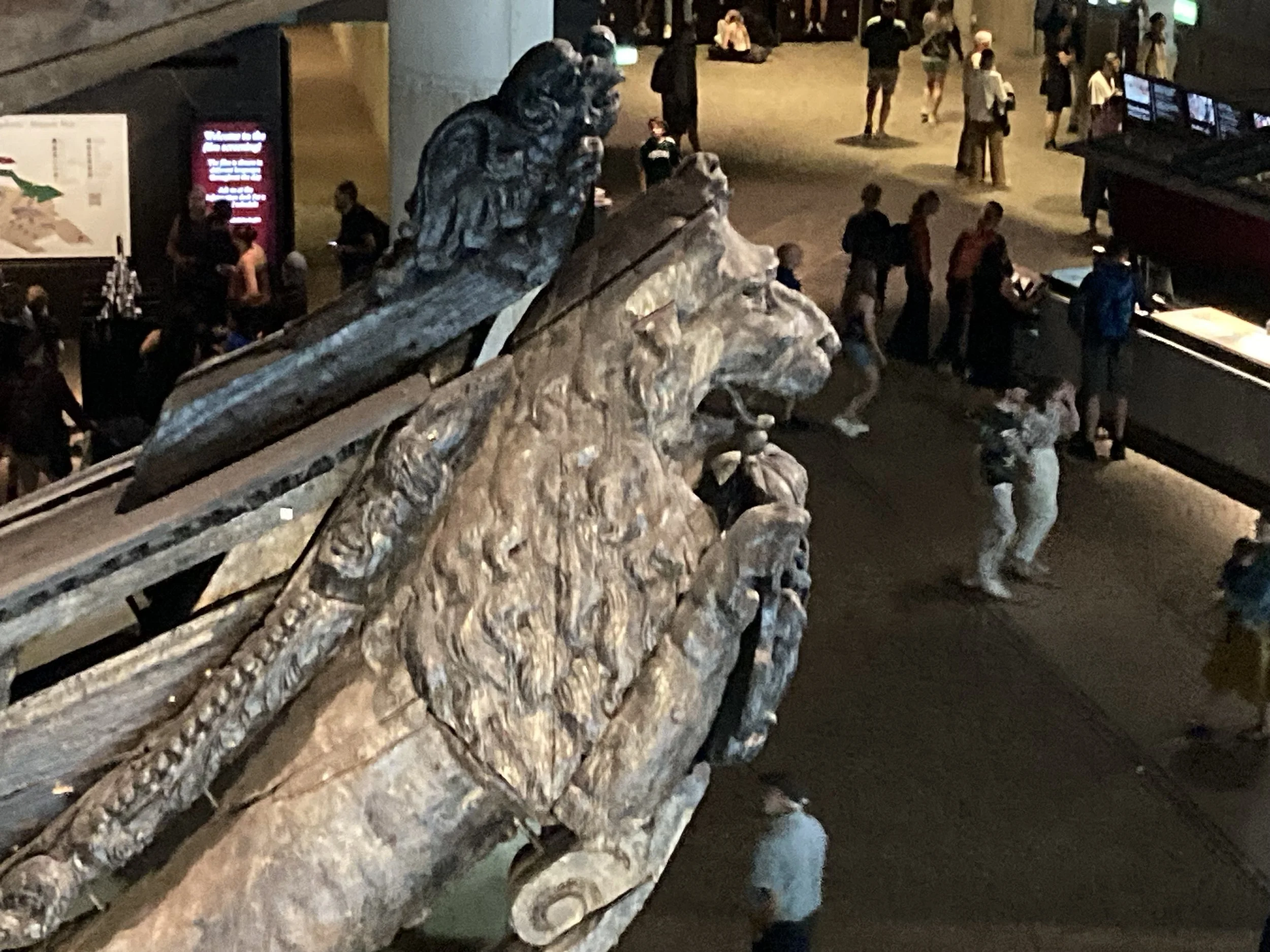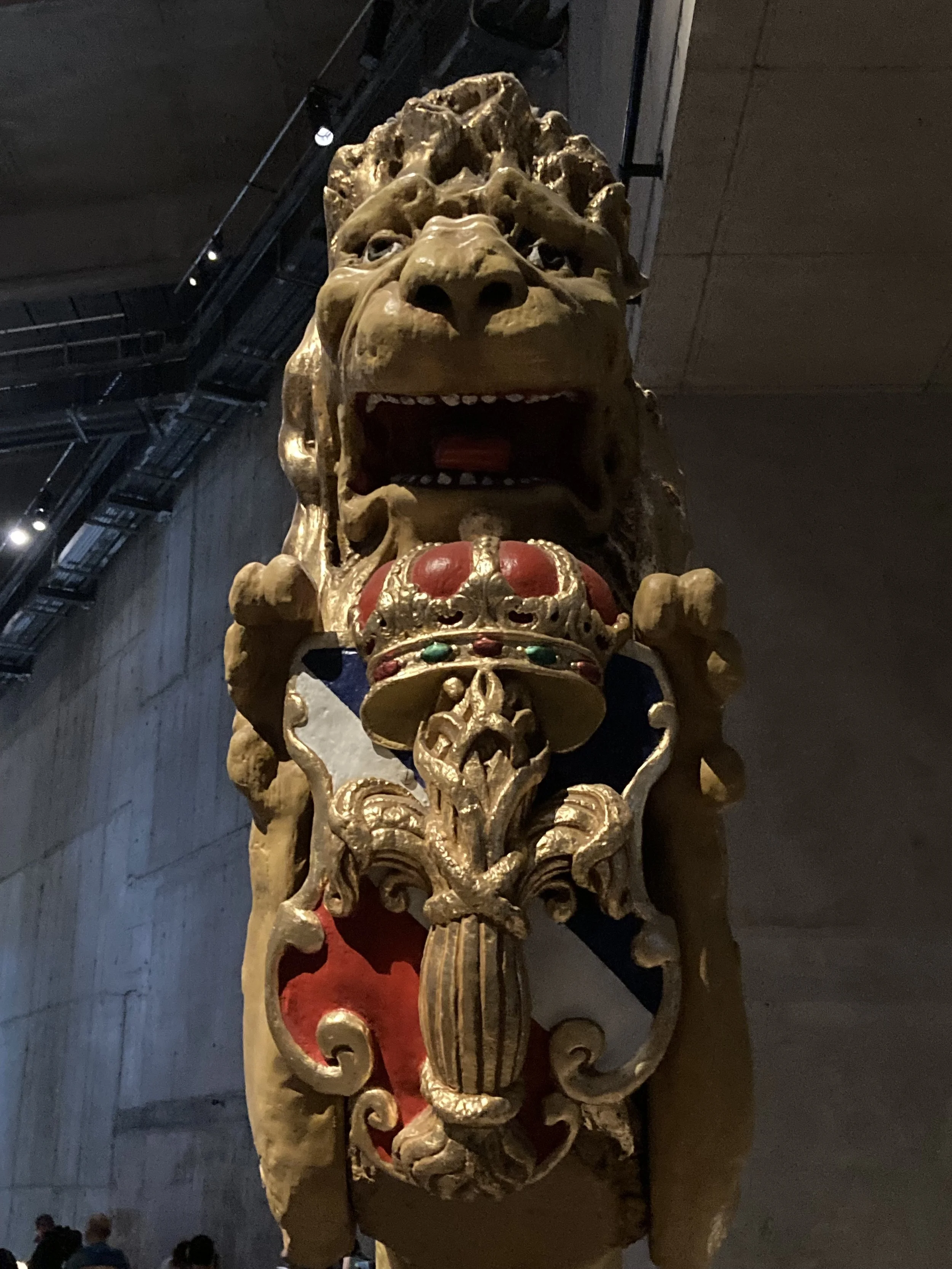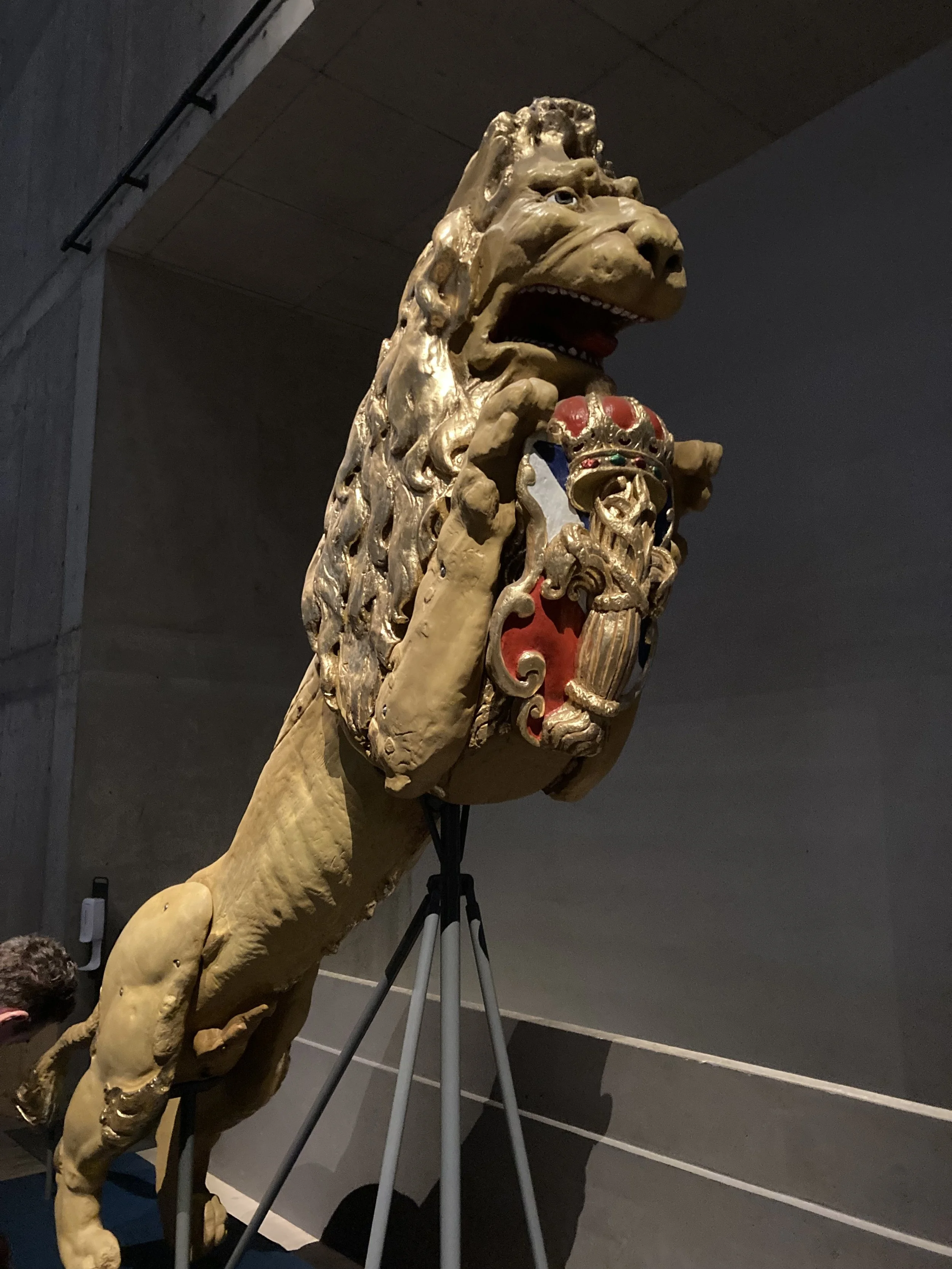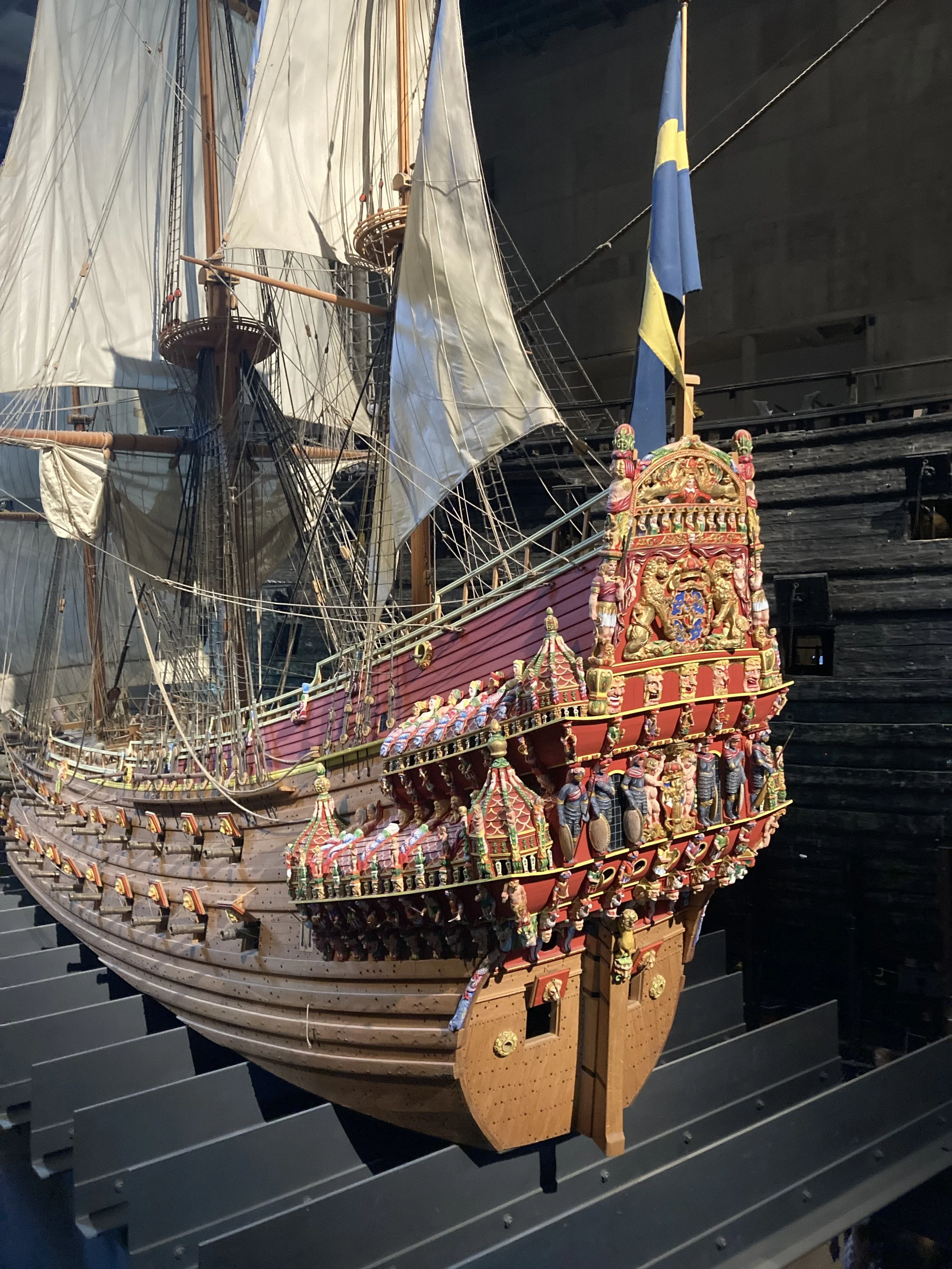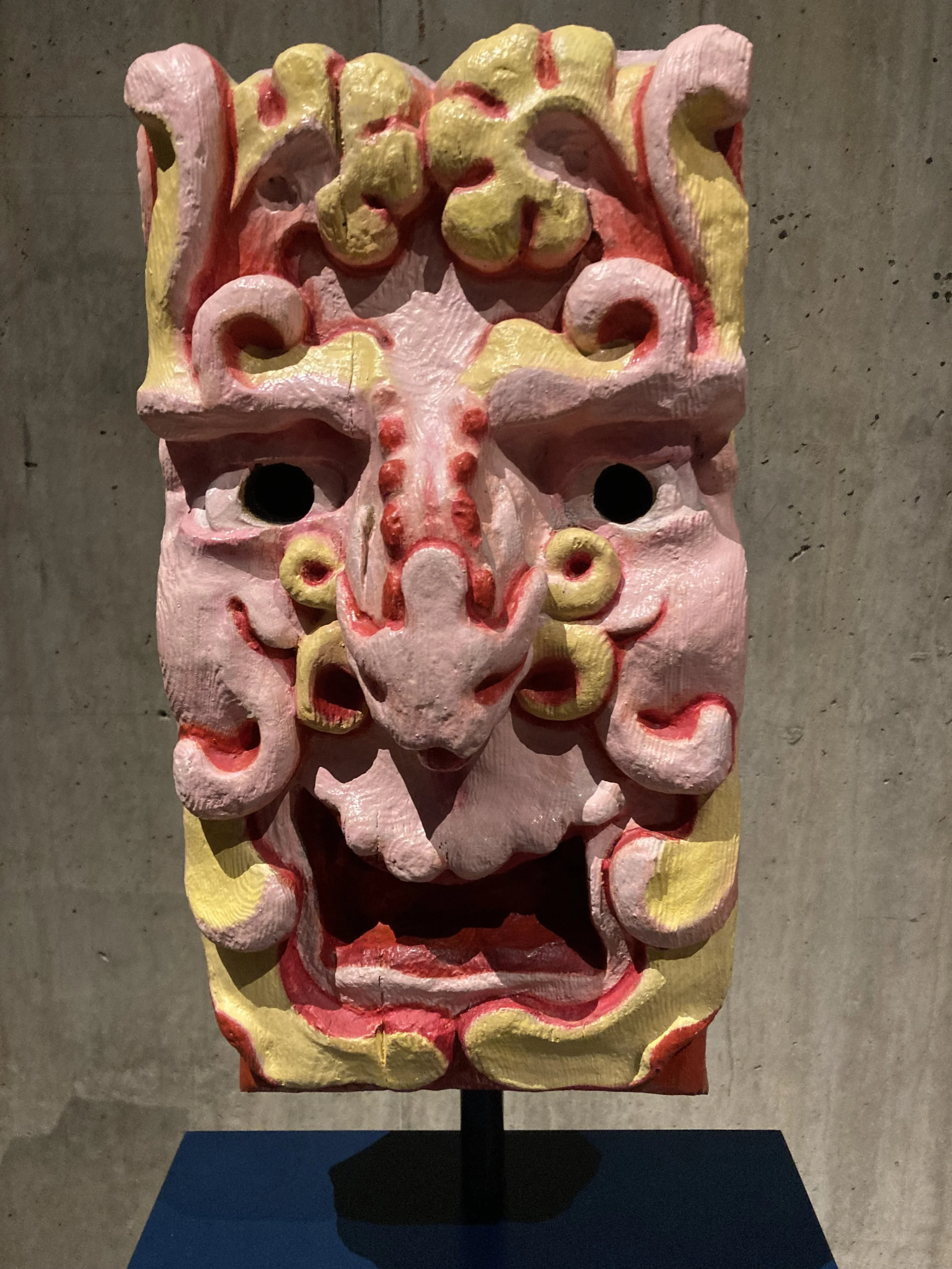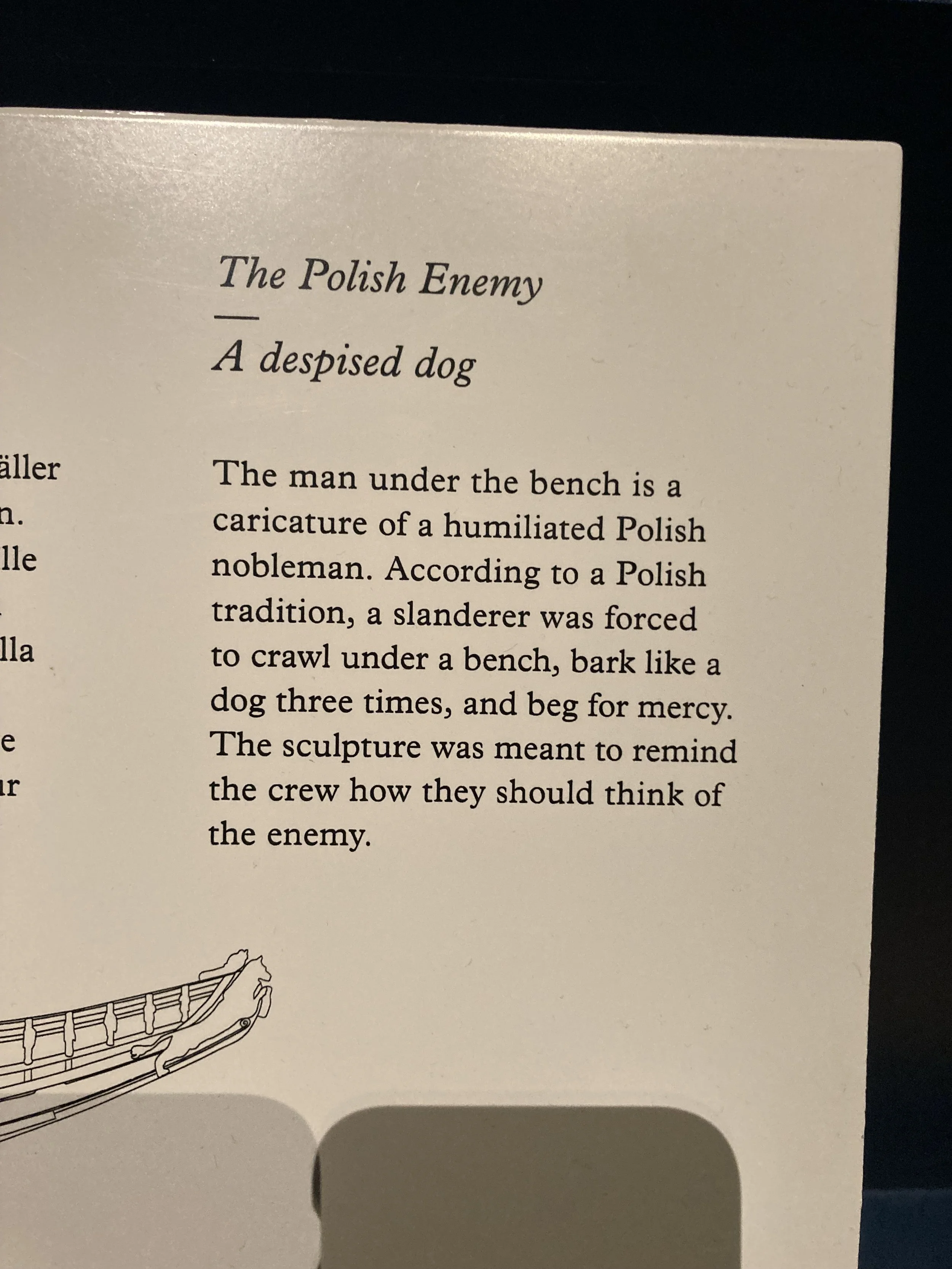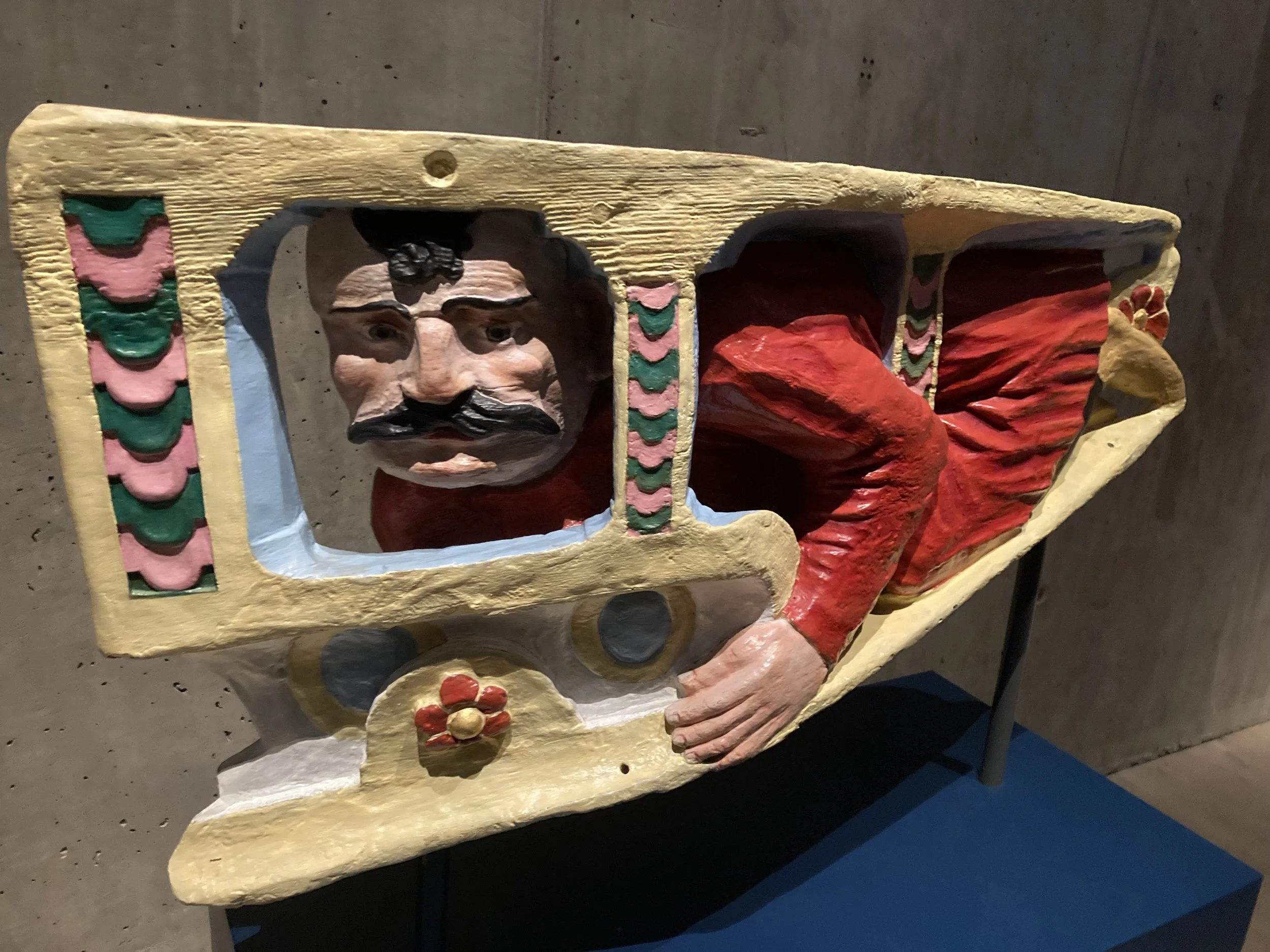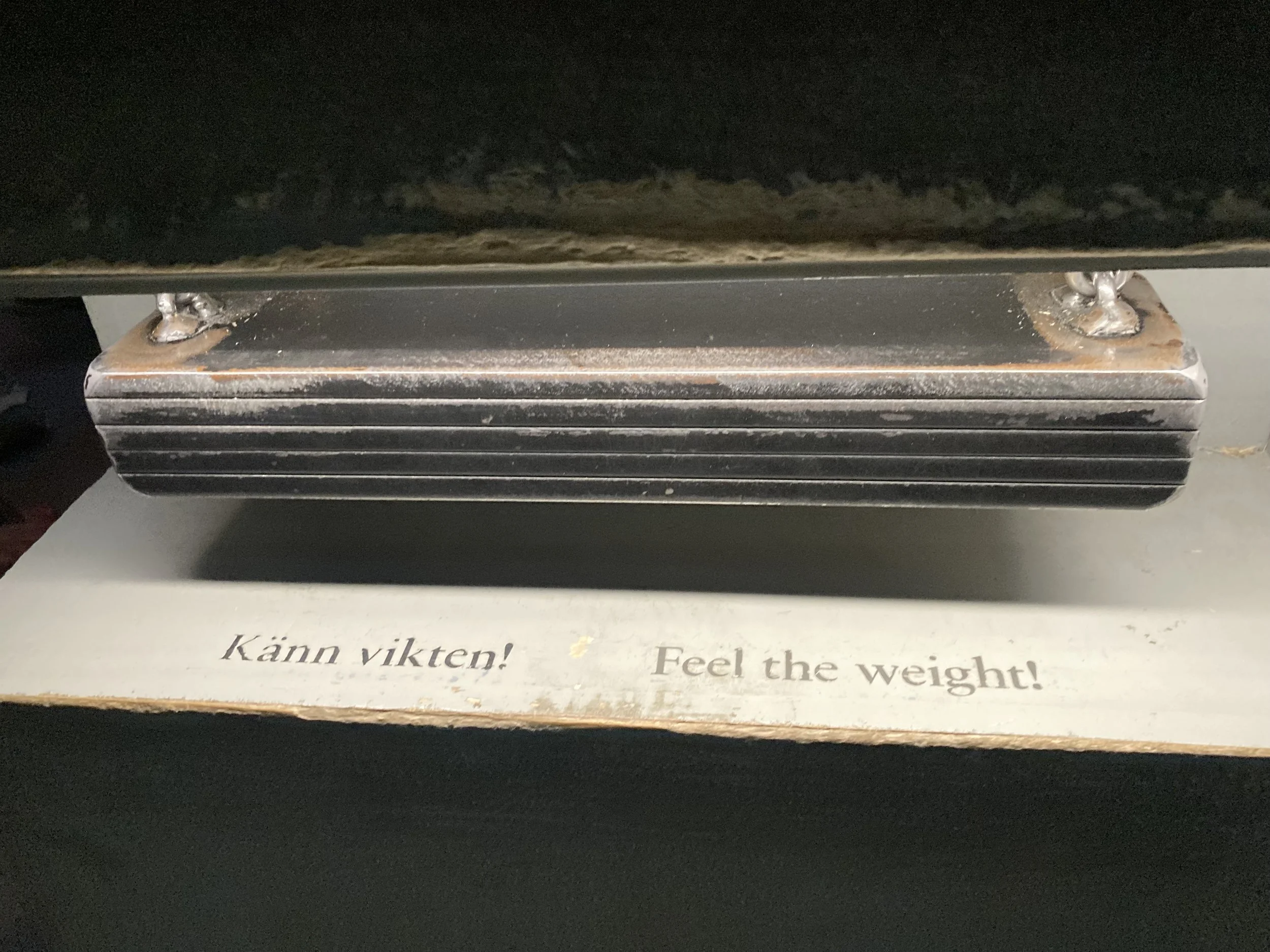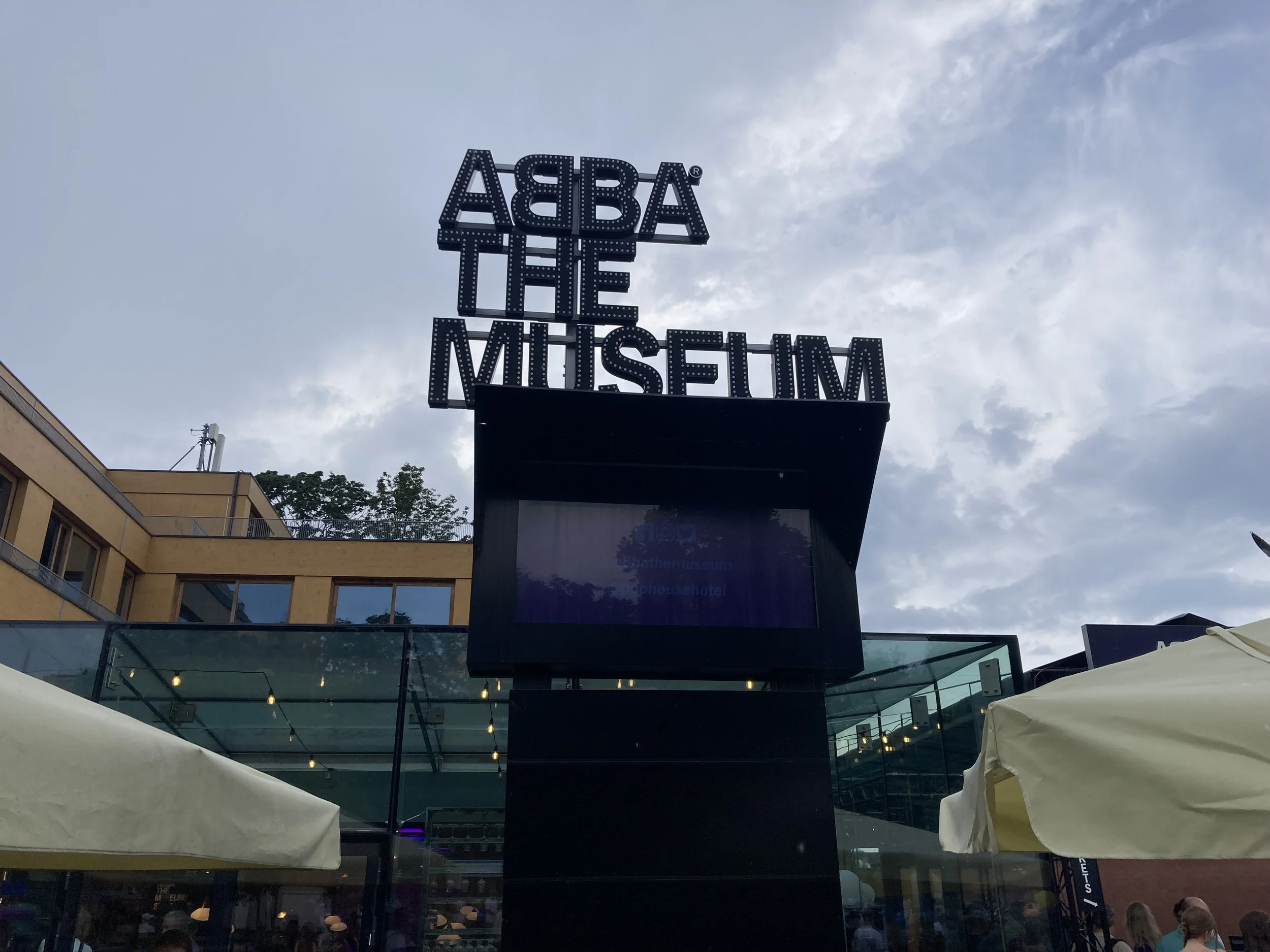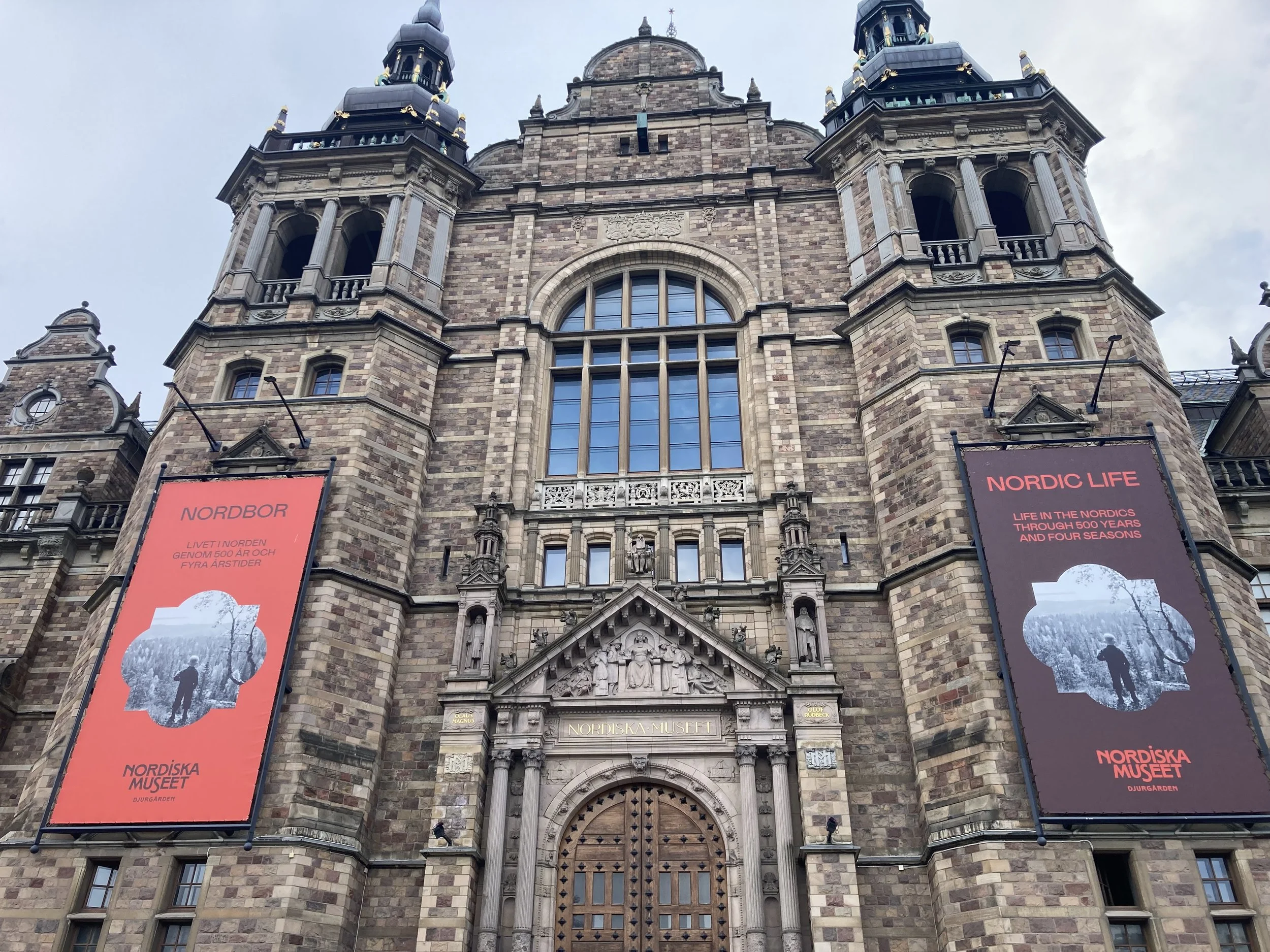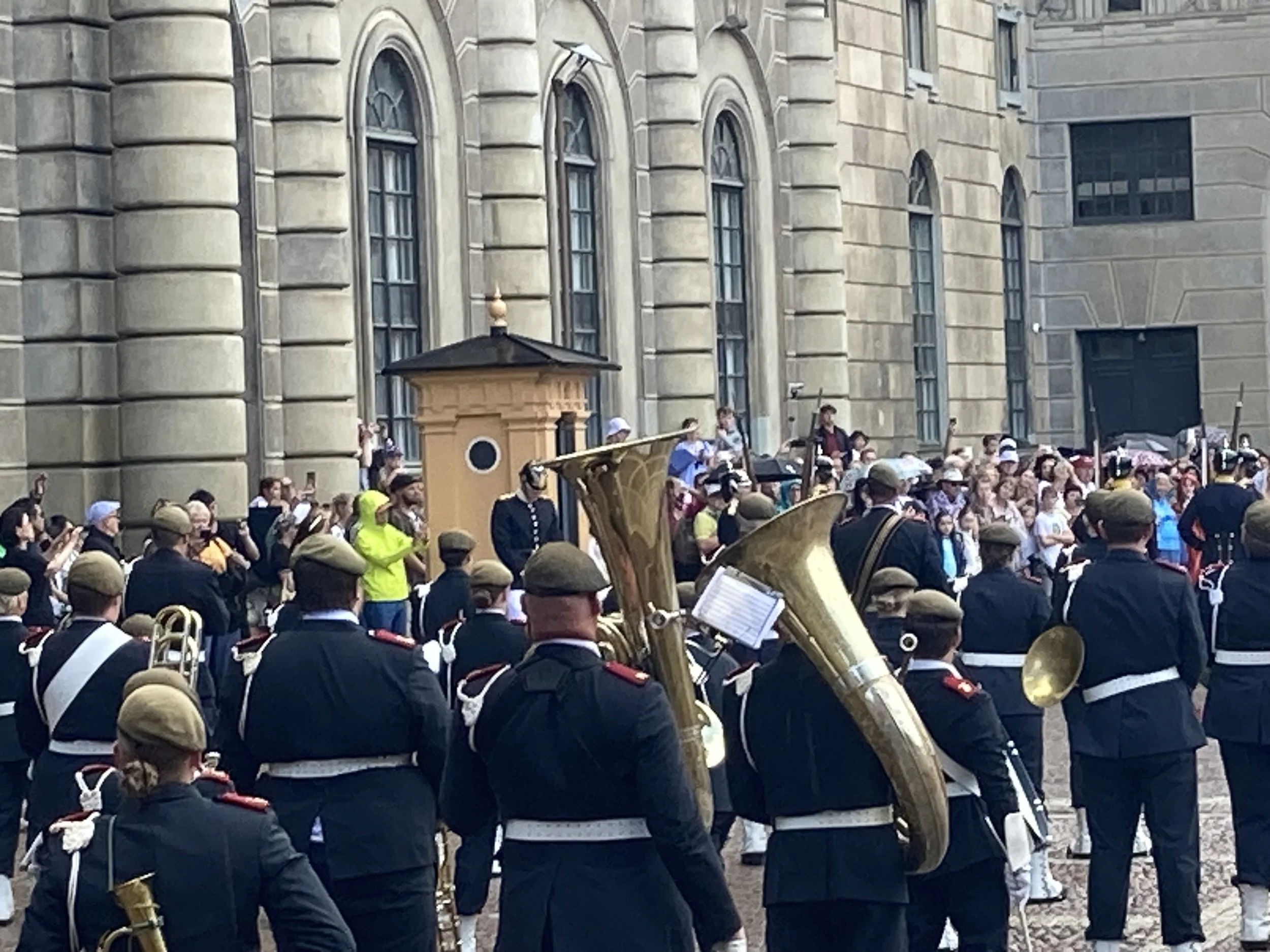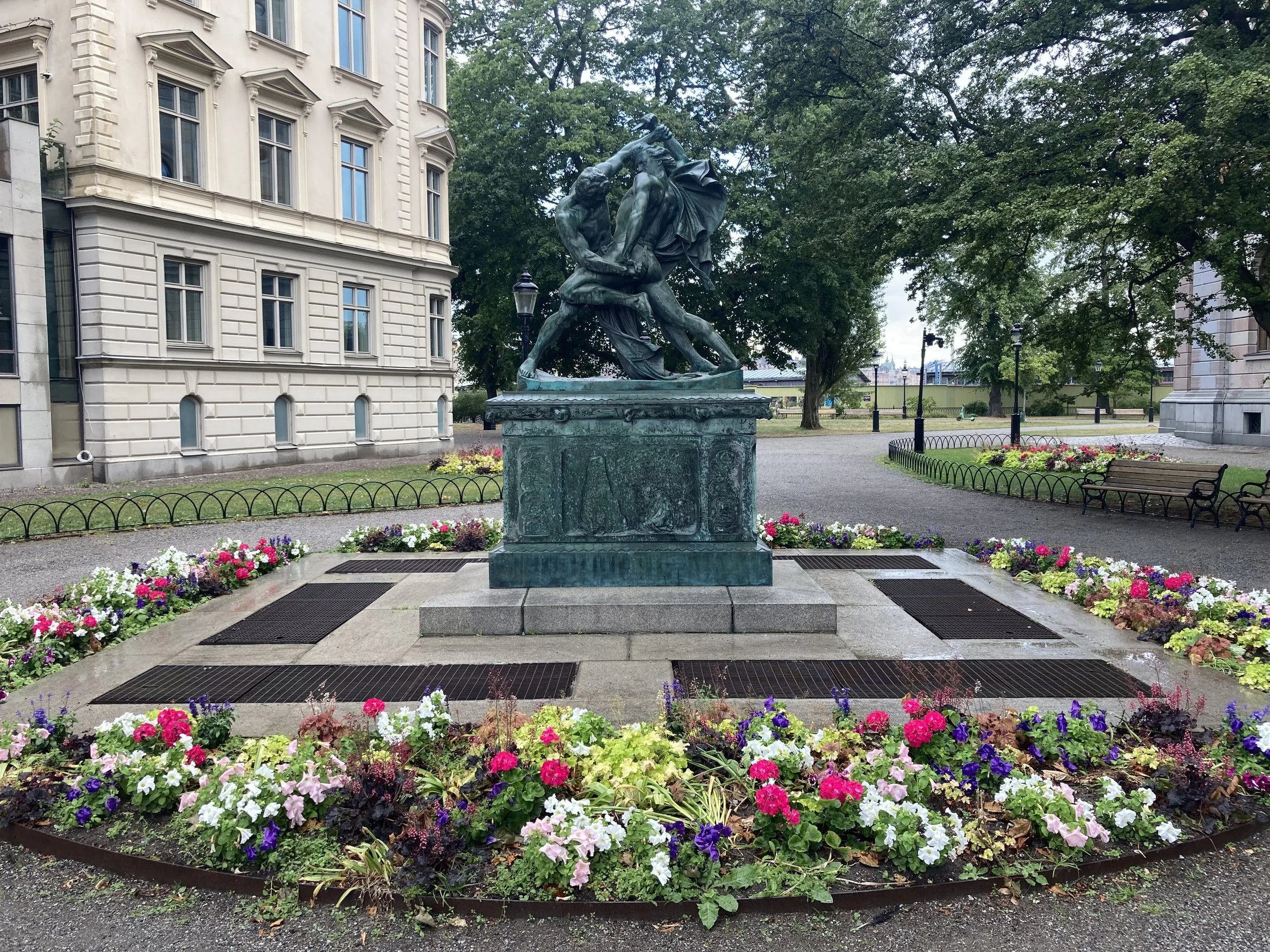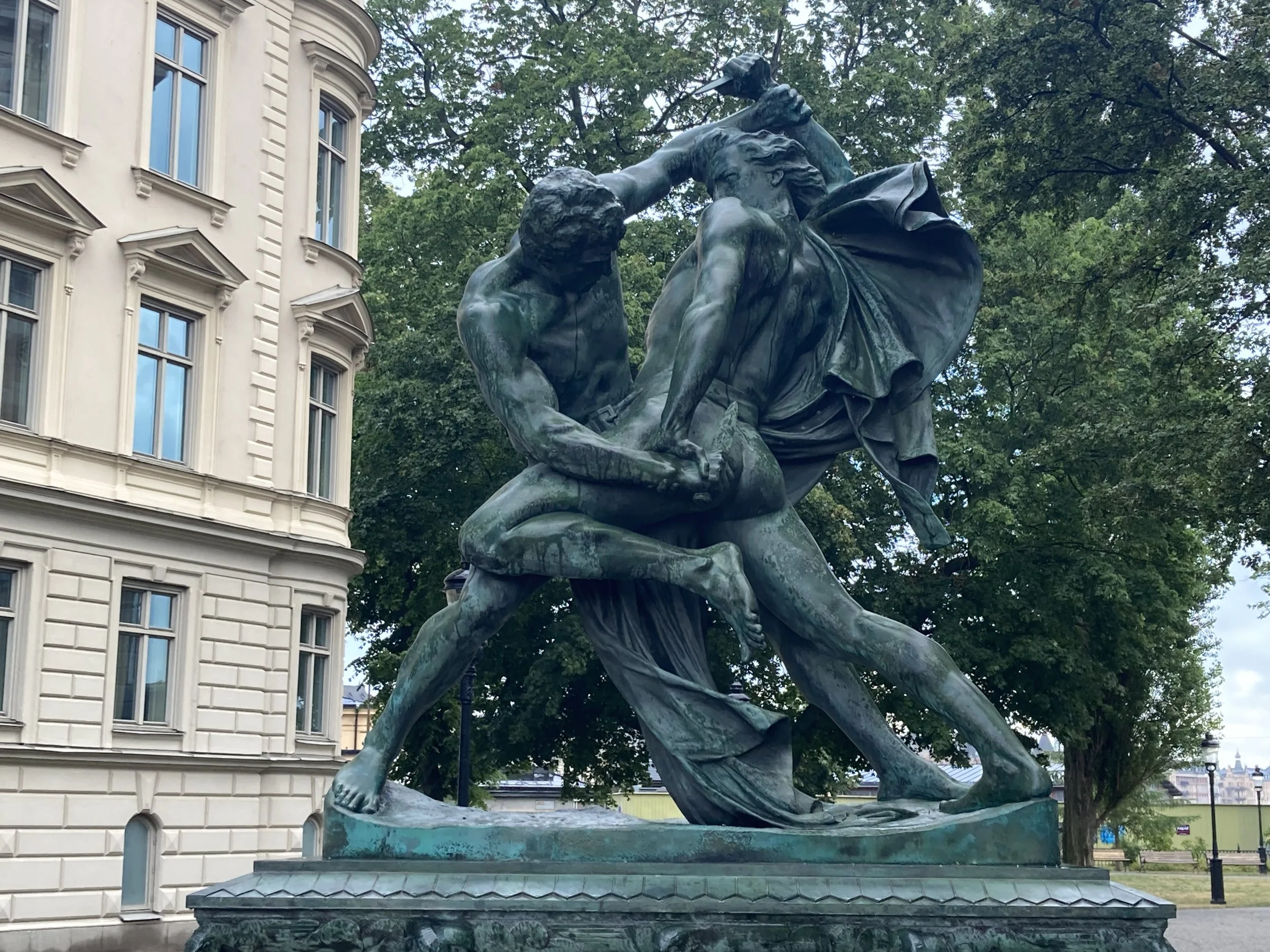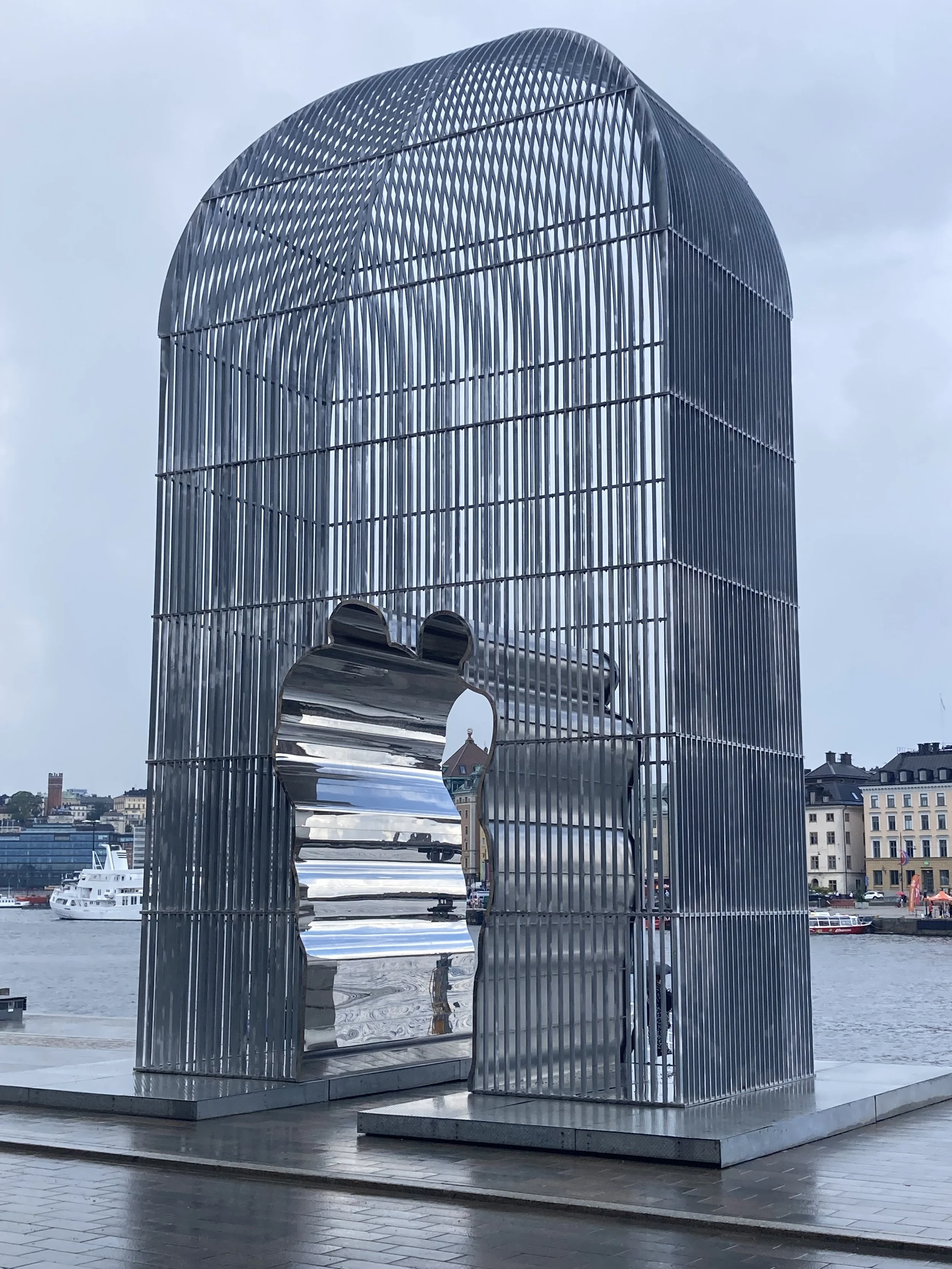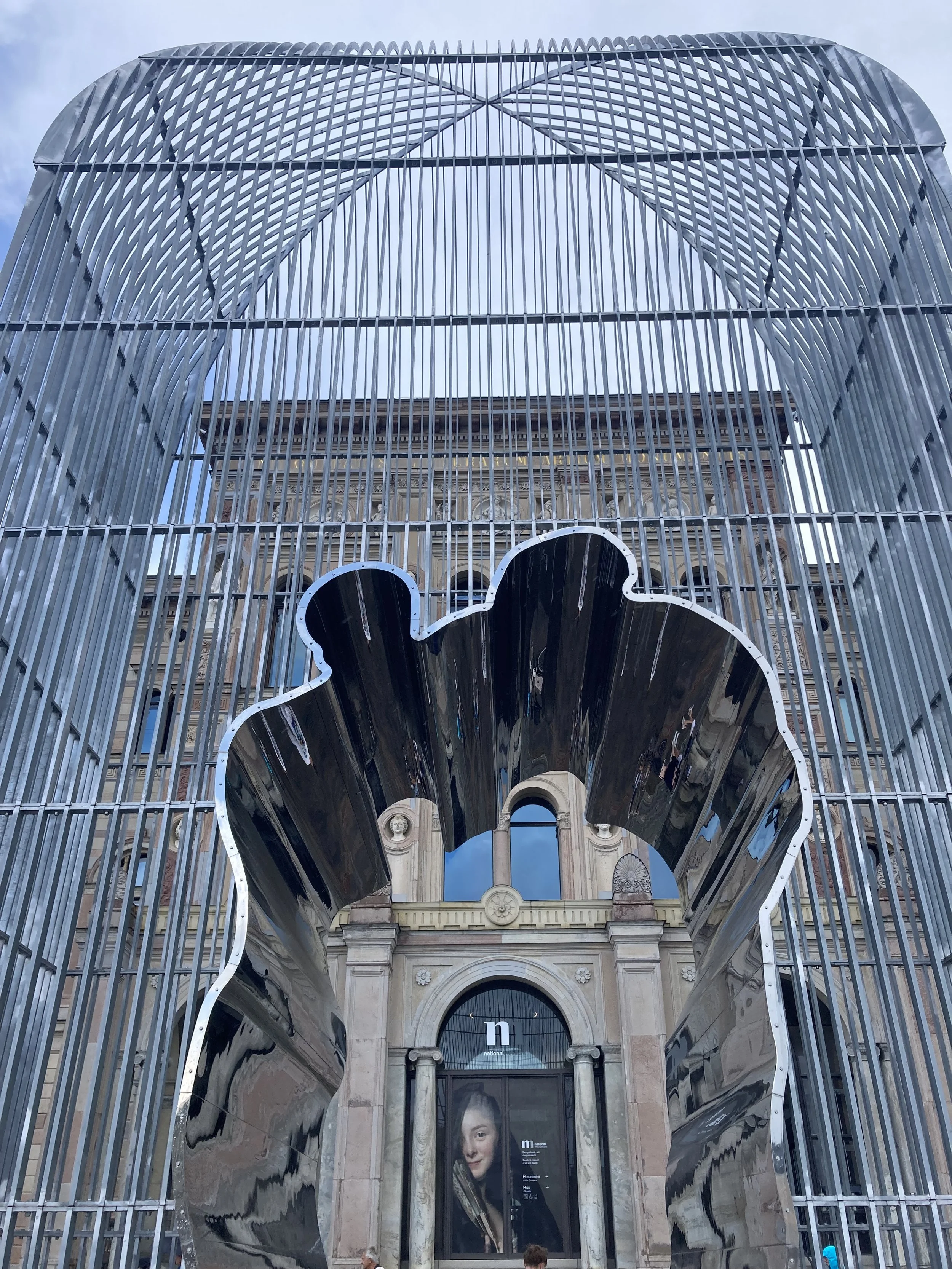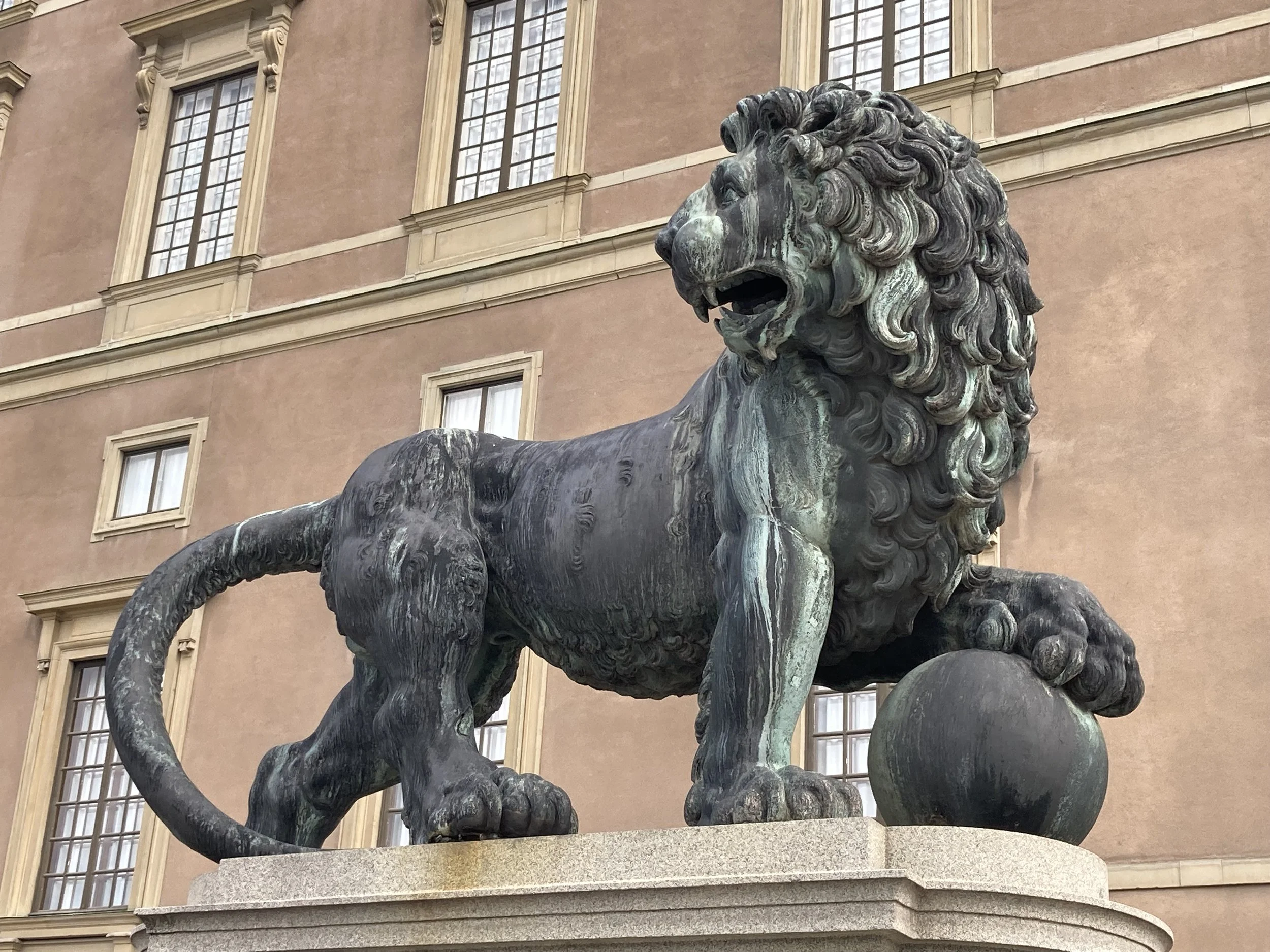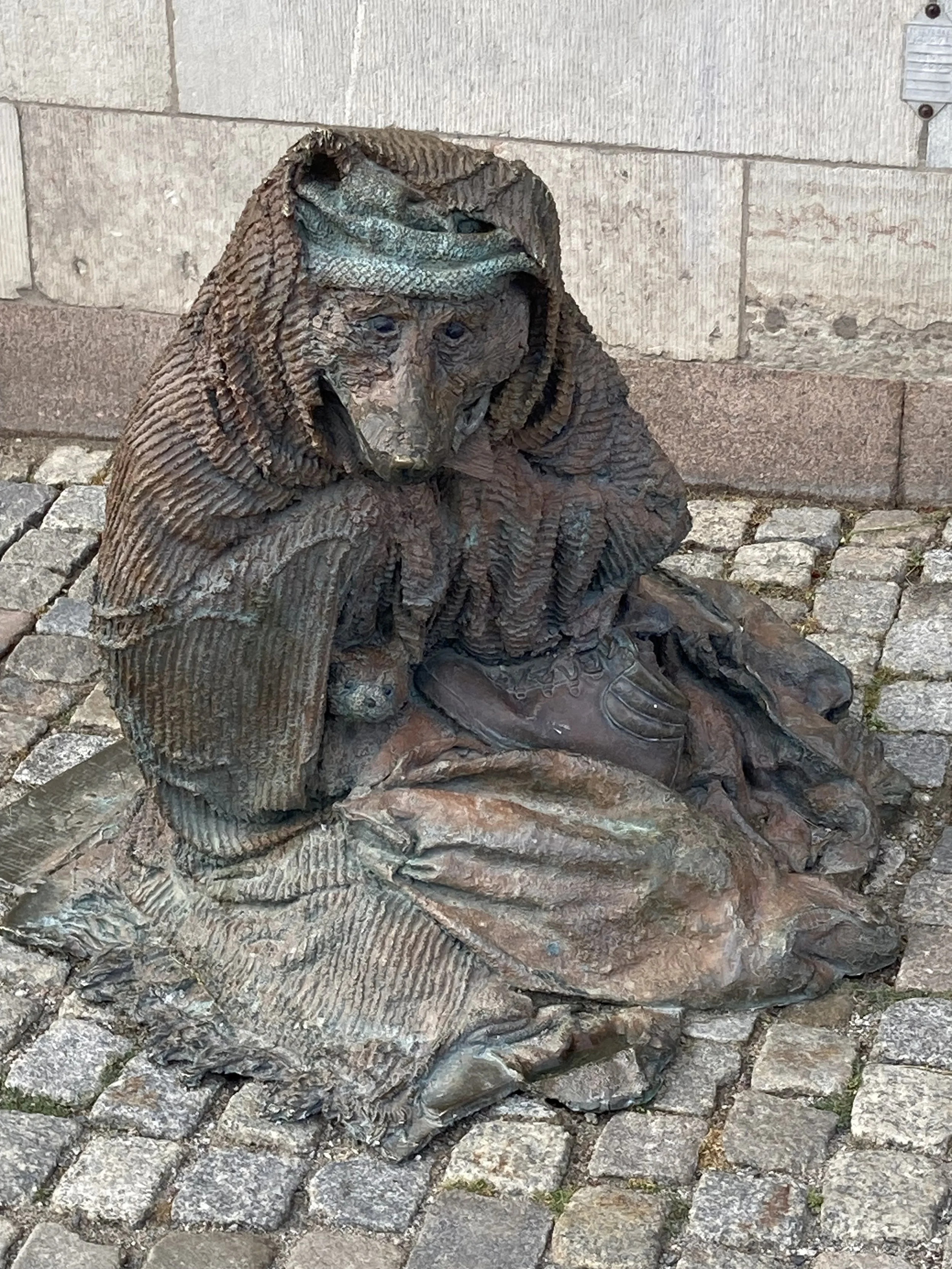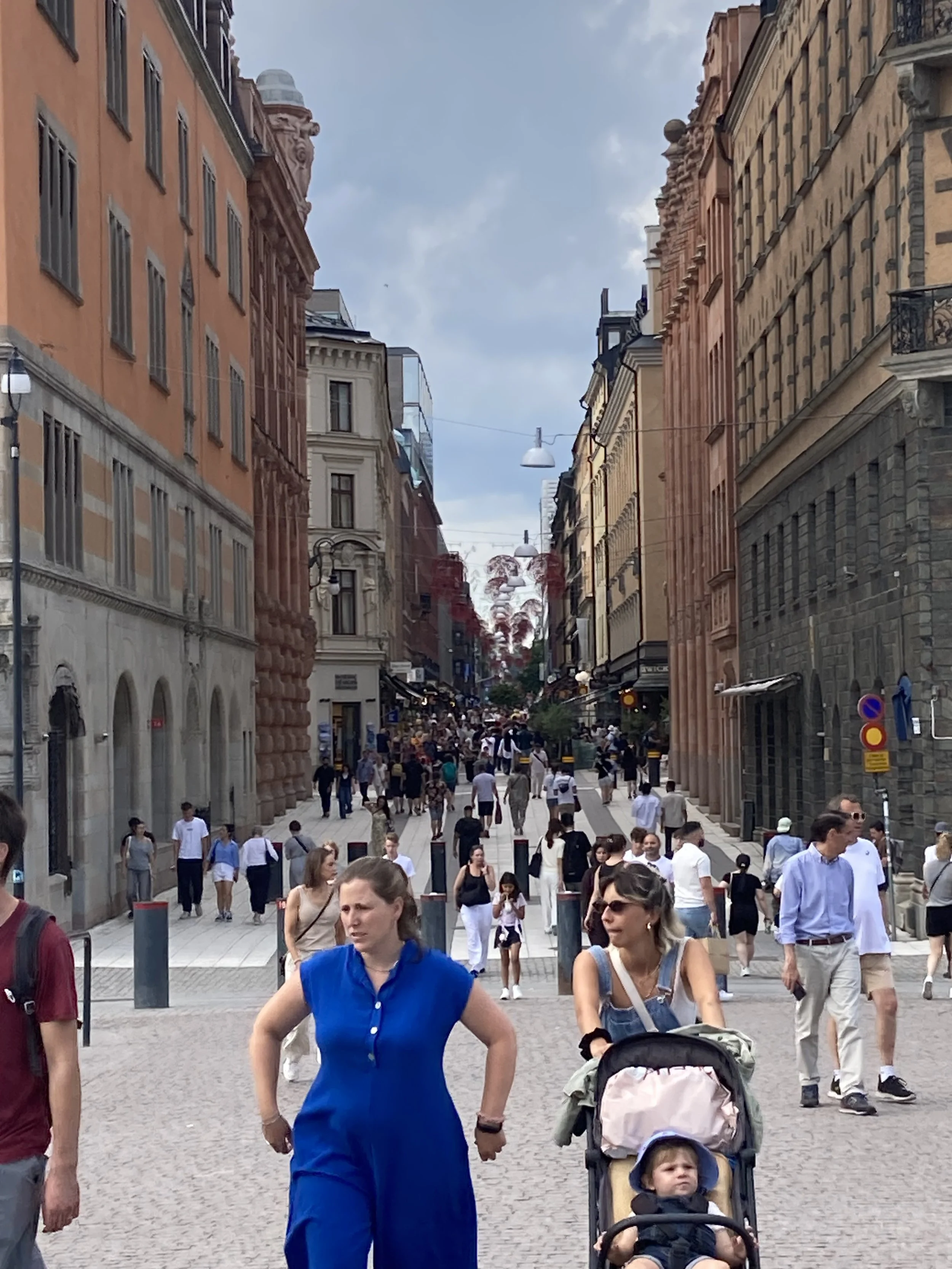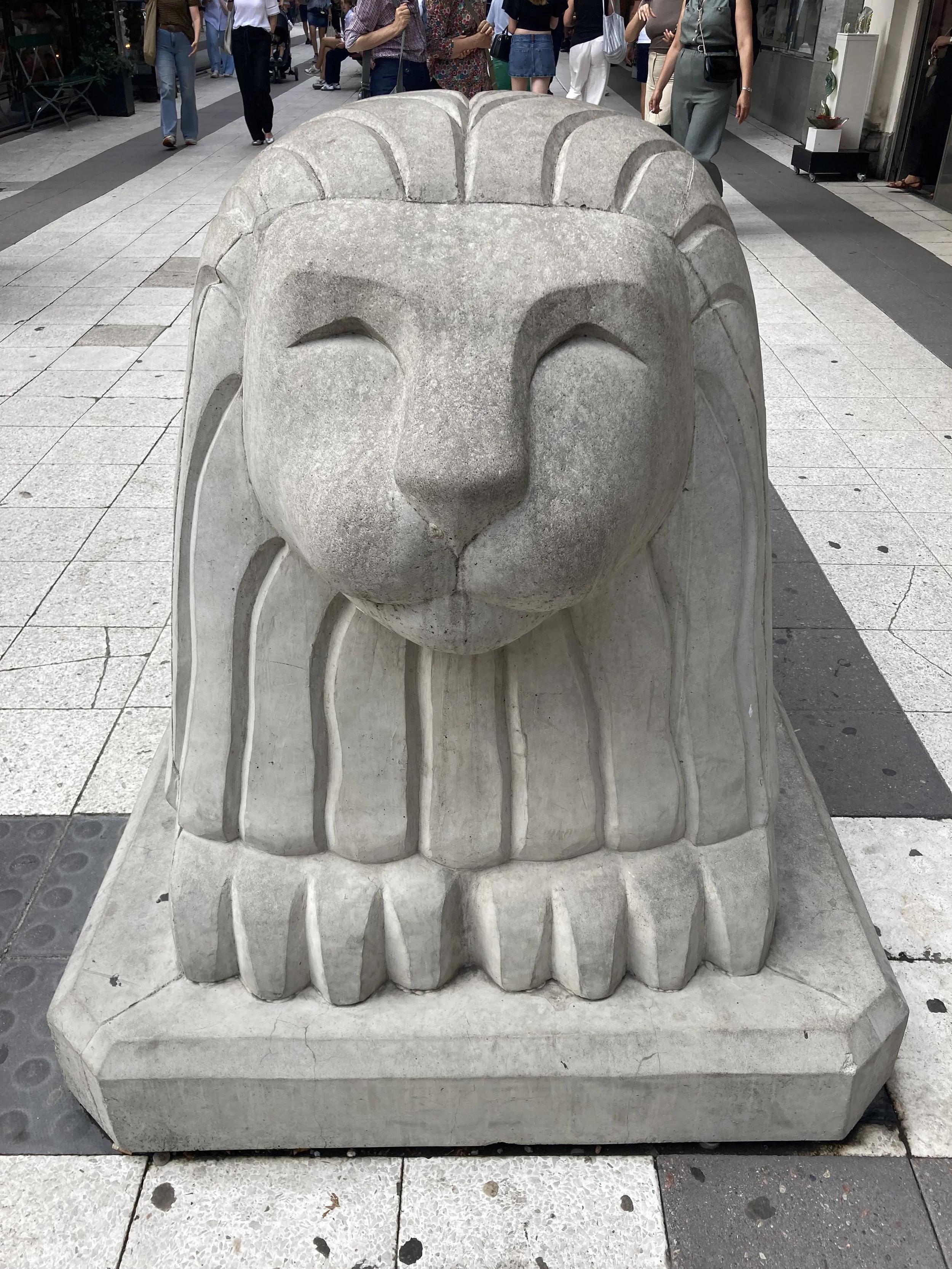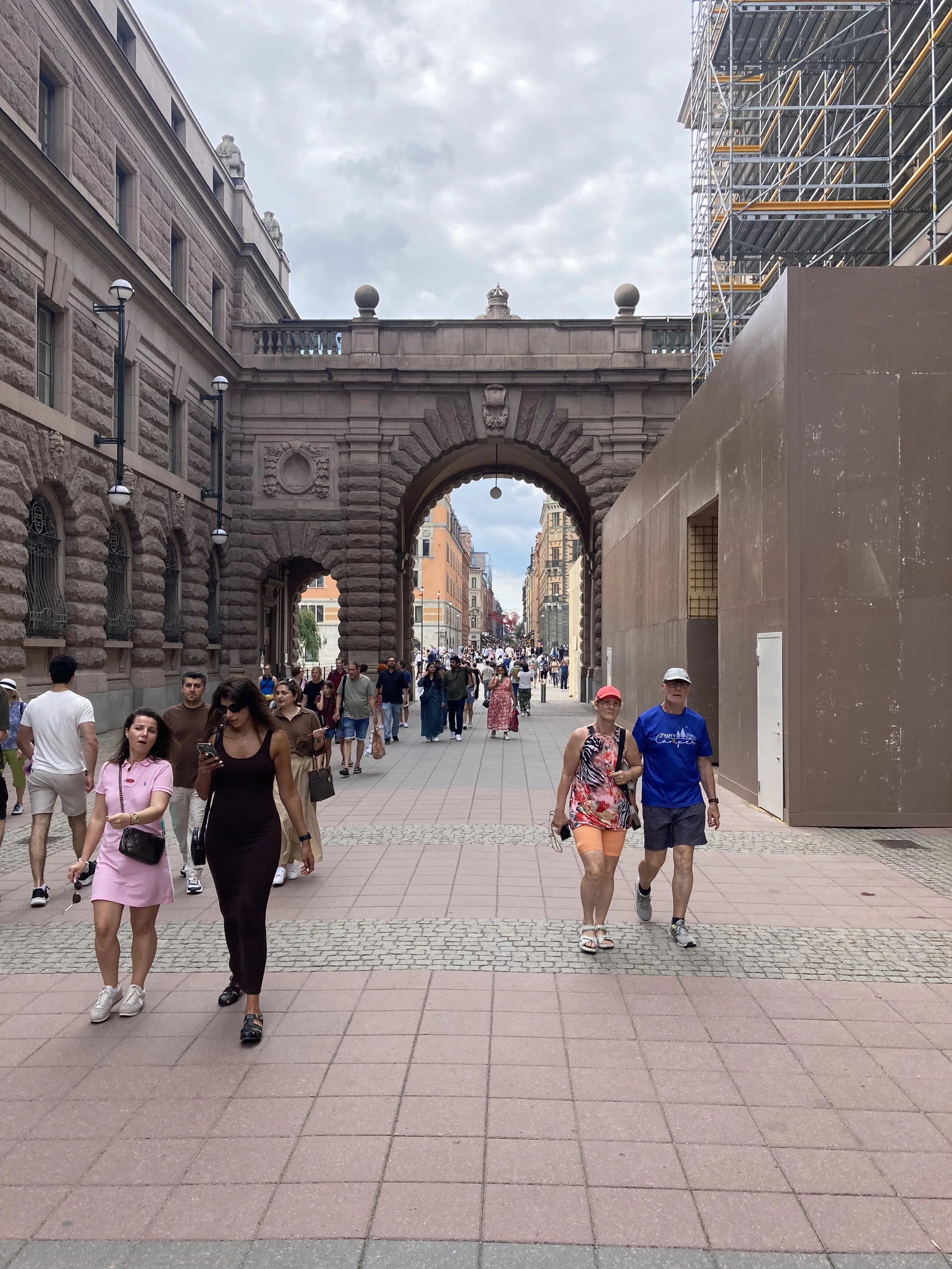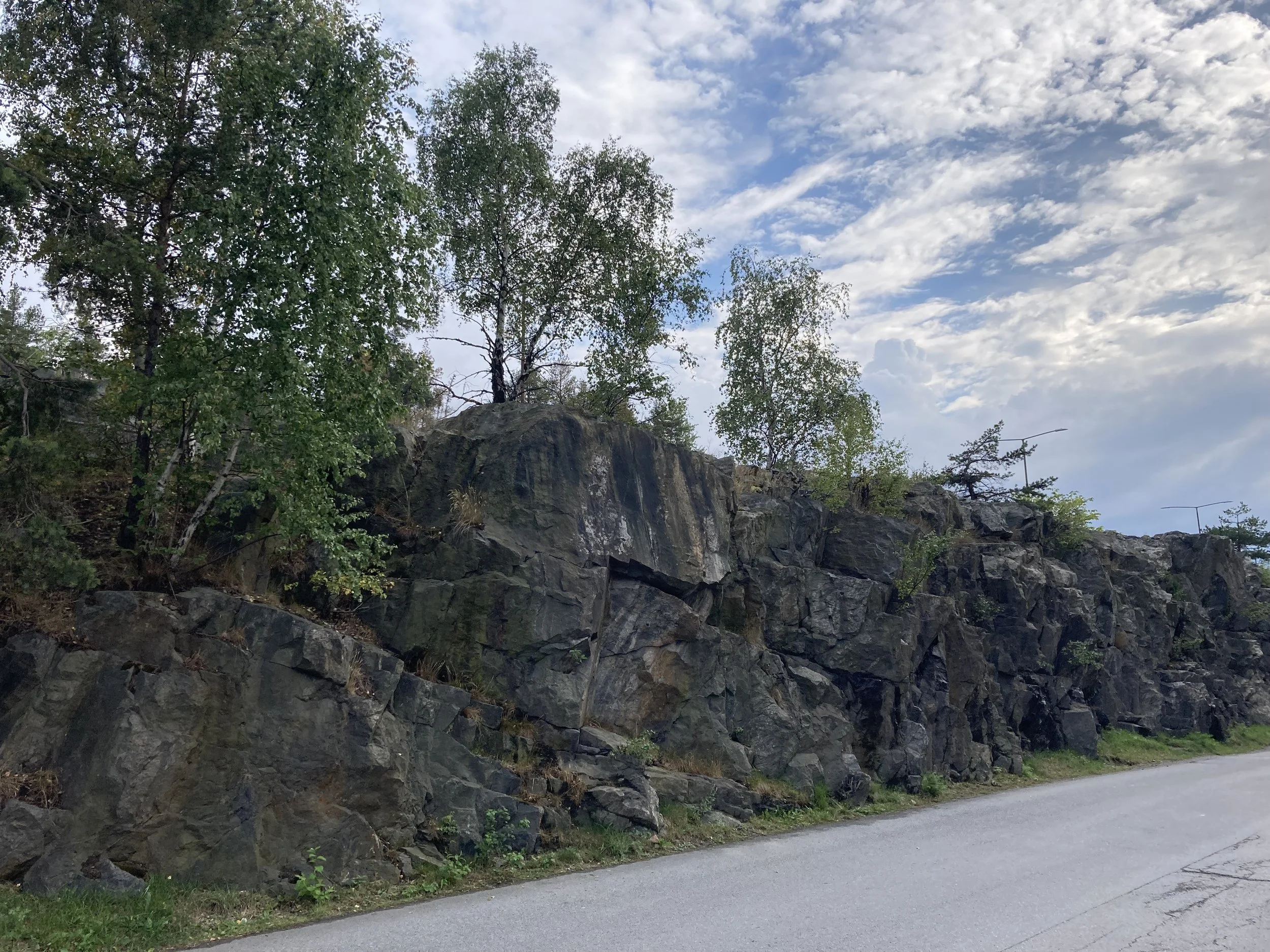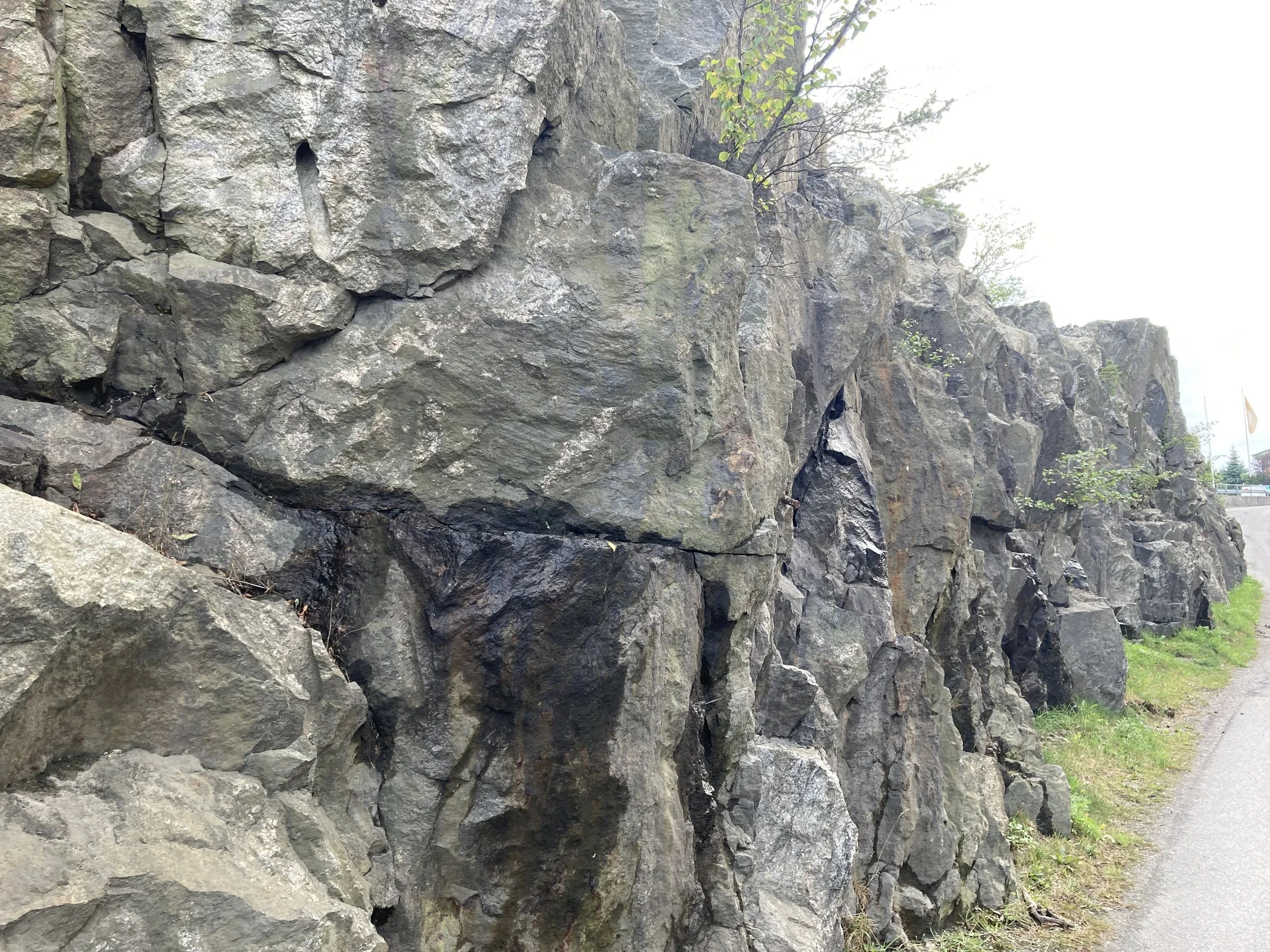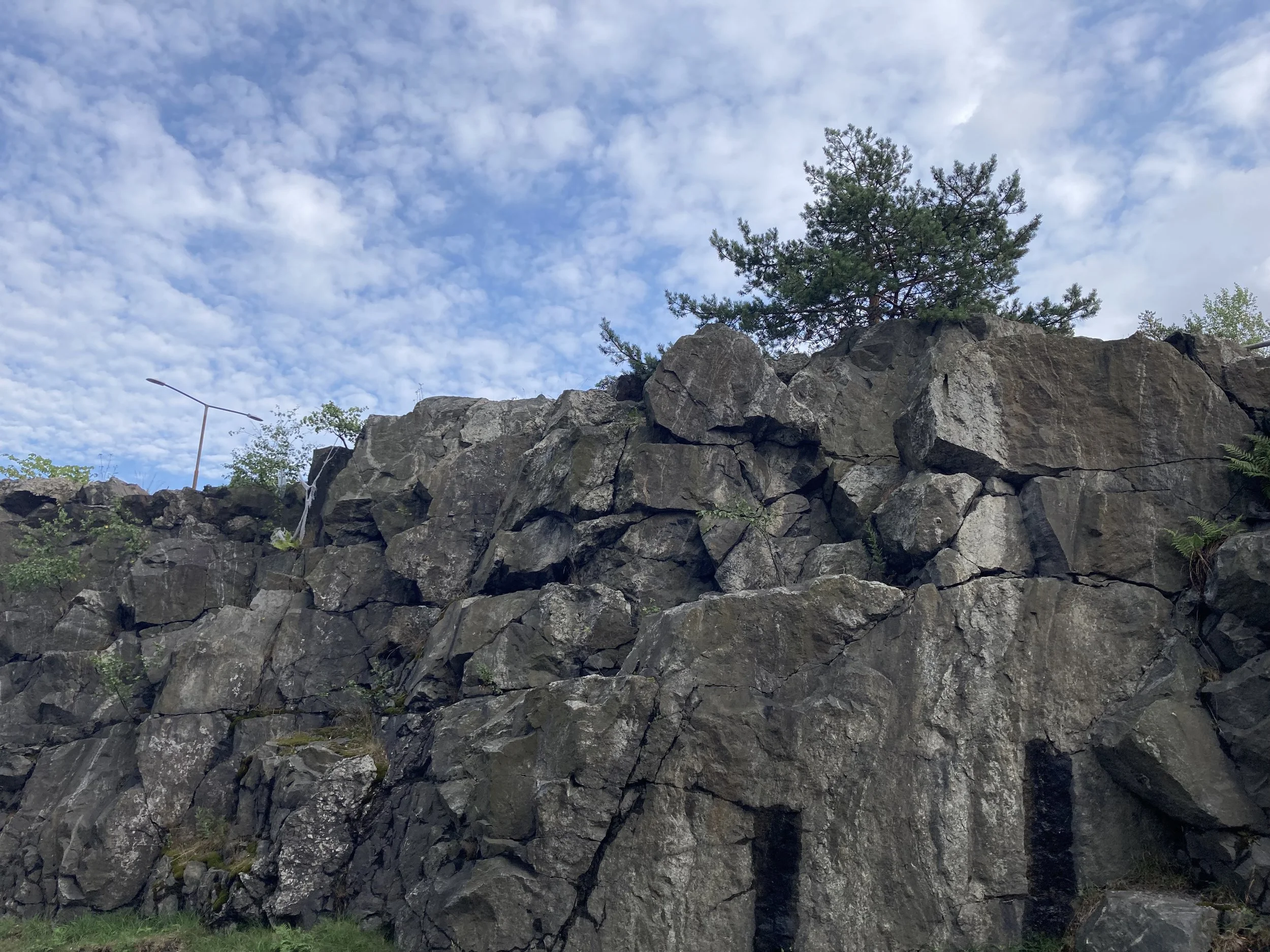Djurgården, Sweden (July 26, 2025)
What do you do on your last day in Sweden? So many options. In fact, another coach friend of mine, Kristina Rosenqvist, who grew up in Sweden (and unfortunately couldn’t be there at this time of my trip), took the time to write me a multi-page email with fabulous suggestions of what do, where to go and best places to eat. So … many … choices!
By the way, I did get to meet Kristina in person via my visit to Ealing (see related blog post) via Nancy Cogswell. Yet another example of life happening for me and providing me exactly what I need precisely when I need it. Amazing.
In reviewing Kristina’s “MUST” list and cross-referencing with my own short-list of what I had wanted to do when I first set out to visit Stockholm, I decided to explore the island of Djurgården and visit the Vasa Museum - one of Stockholm Sweden’s most historic ships and most preserved treasures.
Prominent sign guiding tourists to this treasured war ship that sunk on its maiden voyage. Oops!
So the story of the Vasa ship is a fascinating one. You can get the full, unabridged version here. The Vasa warship sank on its maiden voyage in Stockholm harbor on August 10, 1628, after sailing only about 1,300 meters. It was salvaged 333 years later in 1961 and is now a major attraction at the Vasa Museum in Stockholm. There was a “trial” to discover exactly why it sunk. Lots of finger pointing, but the consensus seems to be that the Vasa sank due to a combination of factors. Namely an unstable design because the king ordered a second row of cannons with a high center of gravity, not enough space for counter weight below and open gun ports that allowed water to rush in during a gust of wind that capsized the ship.
Executive summary on a plaque of why the ship sunk in the Vasa museum
But here’s the thing. While this was a HUGE embarrassment at the time, it’s a massive treasure today, over three centuries later. Once it sank, it sat dormant for 333 years undisturbed and more or less protected by the sea. When it was pulled up, it was relatively well preserved for historians to study and have a really good idea of what life onboard a warship was really like three centuries ago — not just the stories and the legends, but the actual artifacts to study.
One selfie to prove I was actually there in the museum.
Okay, now I’m going to share a bunch of pictures at my feeble attempt to share just how incredibly vast this ship actually is. If you’ve ever been on a cruise, then you have a general idea of the size and scale. Massive for the time and that was the point. This was a war ship. Its very size was designed to terrify you. It would have cannons blasting away at fortified castles … and win. It was built to withstand BEING blasted at by cannons and not sink (provided that the wind didn’t tip it over and it took on water, but let’s not focus on that part for now).
Now, if you look closely, you’ll see that this ship is an absolute work of art. The carvings are insane. What’s more, they are only brown because the paint itself would not have been preserved underwater for 333 years. So, historians recreated the ship in full color so you can see what it would have looked like both as a scale model as well as full sized replicas in full color. This gives you the WOW aspect of what it would have looked like in it’s maiden voyage and all the most spectacular the failure when it sunk shortly after it set sail in the sunlight.
Just a few more things to call out that were cool aspects of this museum. As a kid, I didn’t love these things because there was a lot of “standing around” while my parents read longs chunks of text. BORING! The organizers (who were once kids themselves) got the message and have created much more interactive exhibits including things you can play with, sit on, lift, interact with, watch, etc. This was one of my favorite. “See how heavy it would have been to load a single cannonball on this ship!”
“Can you even lift a single cannonball, bro?”
Suddenly, these simple add-ons make the museum much more interesting and fun. Knowing how heavy a cannonball was makes it tactile and interesting in a whole knew way. Watching a reenactment of the trial that most certainly would have happened following the sinking of this ship was like watching a modern day episode of “Law & Order: Vasa Ship Investigation Unit” special series.
It’s not that hard to make a museum interesting to more people, and Vasa gets it right. They have a timeline of what they have already discovered and what they are still working on. They have the stories of those who died on board. They have models that show the discoveries from the research conducted. It’s very immersive and interesting. Well worth the visit. So what next?
Really? A museum dedicated to ABBA? Do tell!
So after I finished up, I wandered over to take a peak at a sight that caught my interest. The ABBA Museum. It’s what you think it is. The website captures the essence perfectly, “Walk in, Dance out.” You can be the 5th member of ABBA, answer trivia, sing karaoke, dress up in costumes, buy merchandise, and basically get your ABBA on and totally geek out.
The thing is, I was running solo this day, so this felt more like a group activity. if I was with friends, it would so be on. But by myself, well it just didn’t feel like a solo activity to me (perhaps that’s a growth edge to explore). In any event, I’m glad I checked it out.
Nordic Life Museum also a good option (Elena would have loved it)
And if I were going for a museum marathon, the Nordic Life museum looked to be spectacular. I find, however, I have about one museum in me per day and then I get museumed out. It’s not that I don’t value museums, just the opposite. I want to savor them instead of “rollerblading through the Louvre” as it were.
So I reached out on What’sApp and had one last visit with Christina Lindberg whose apartment was nearby. Like me, she was getting ready to travel tomorrow, so it was a quick visit so that we could both get to packing our bags and ready for our trip. All the same, I valued the conversation and companionship, however brief, and shared what I had learned that day. In fact, that reminds me. On my way over to the Vasa Museum, I caught the changing of the guard at the Royal Palace — totally unplanned & awesome all the same.
My dad’s a tuba player, so it’s always appreciated to hear the tubas playing!
Now that I know which way the band faces and that they change the guard at 12pm each day, I could better plan where to stand to observe (and when). I was just happy to see it at all. The music caught my attention and I scurried up to watch the process. Turns out Christina’s niece will be part of this ceremony later this year. How exciting!
I took the long way home and captured a few more pictures that grabbed my attention which I’ll share here. As I shared in an earlier post, the beauty of Sweden has my full attention. I love all that I see here and I’m a visual learner.


